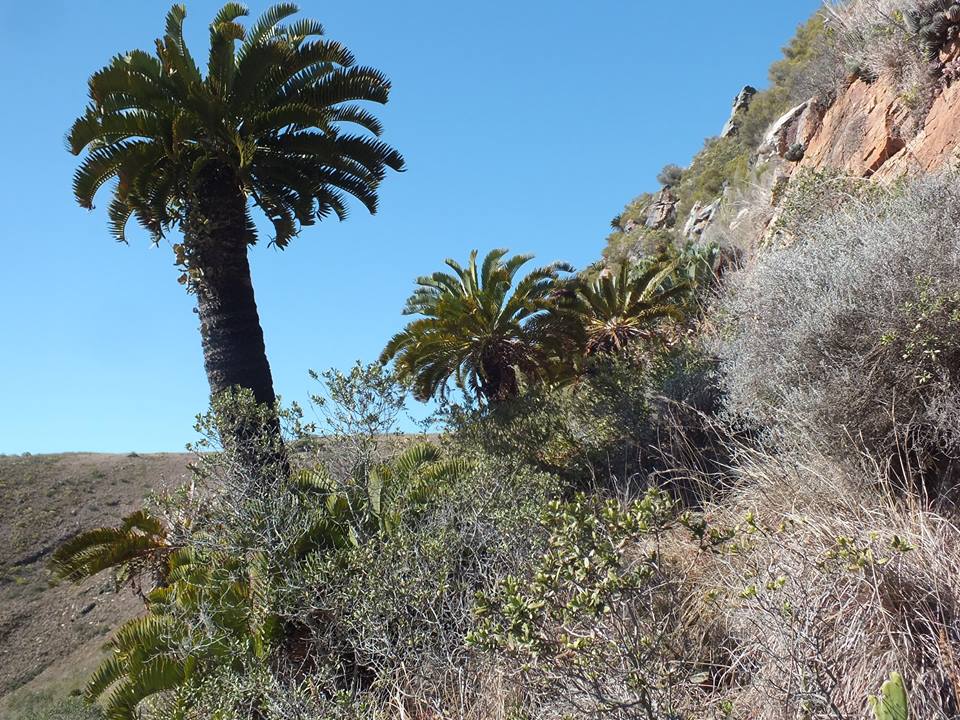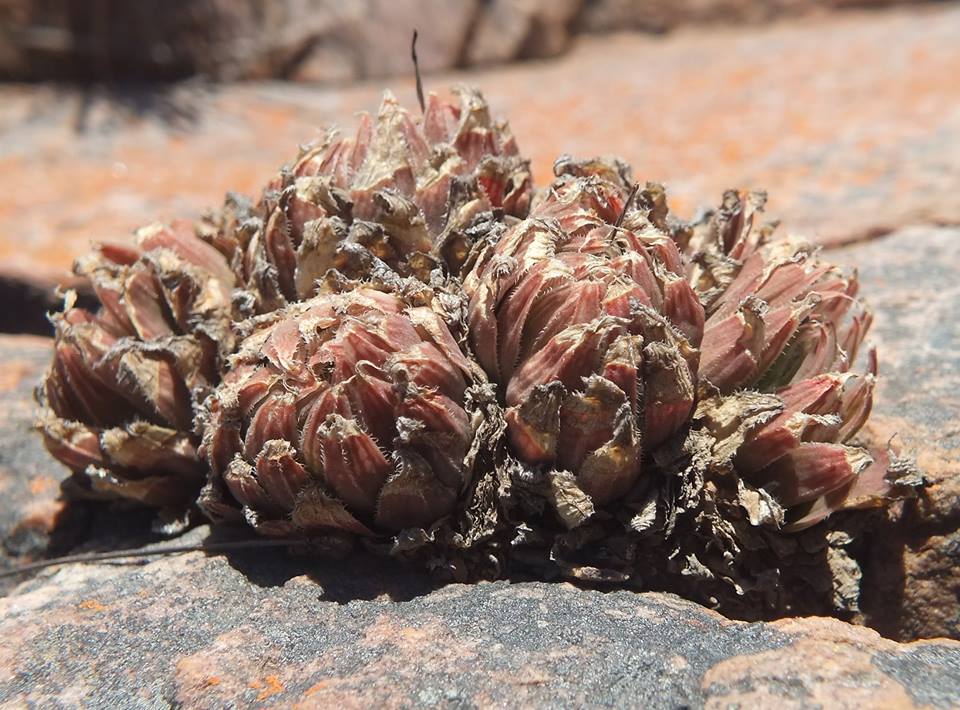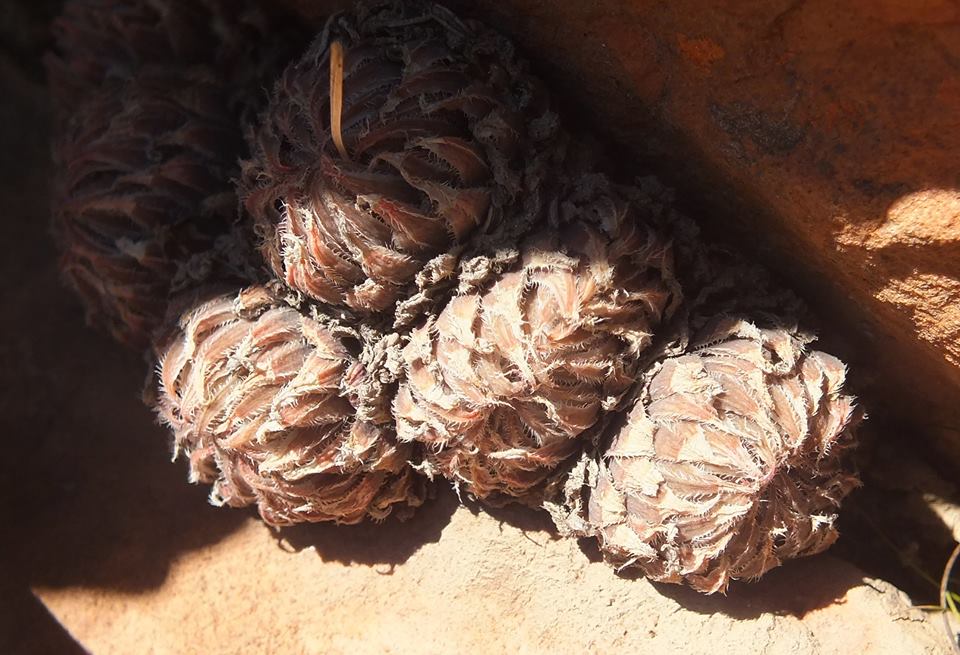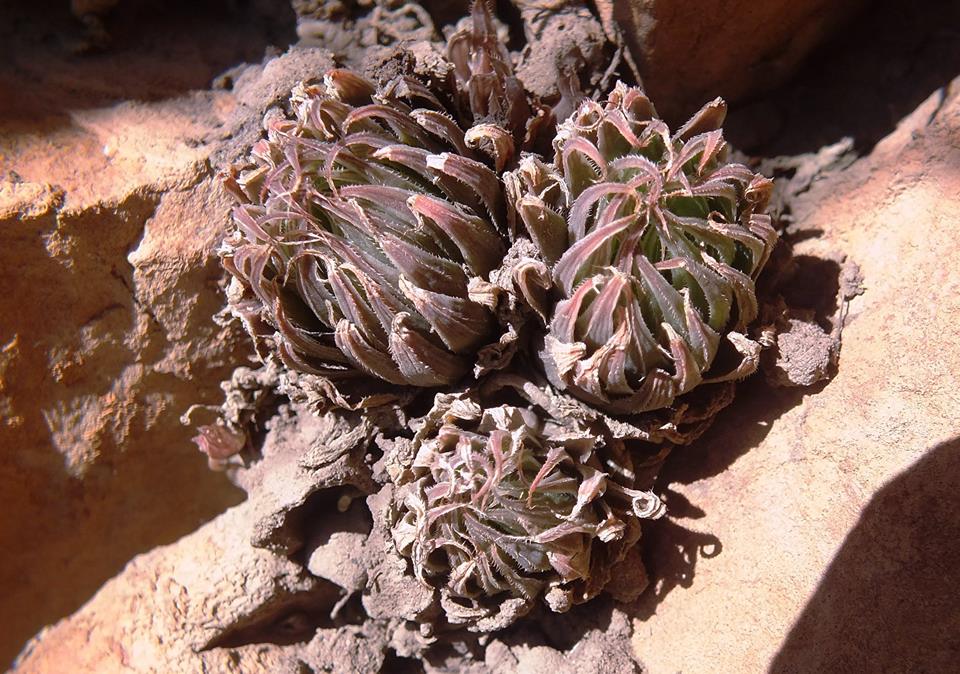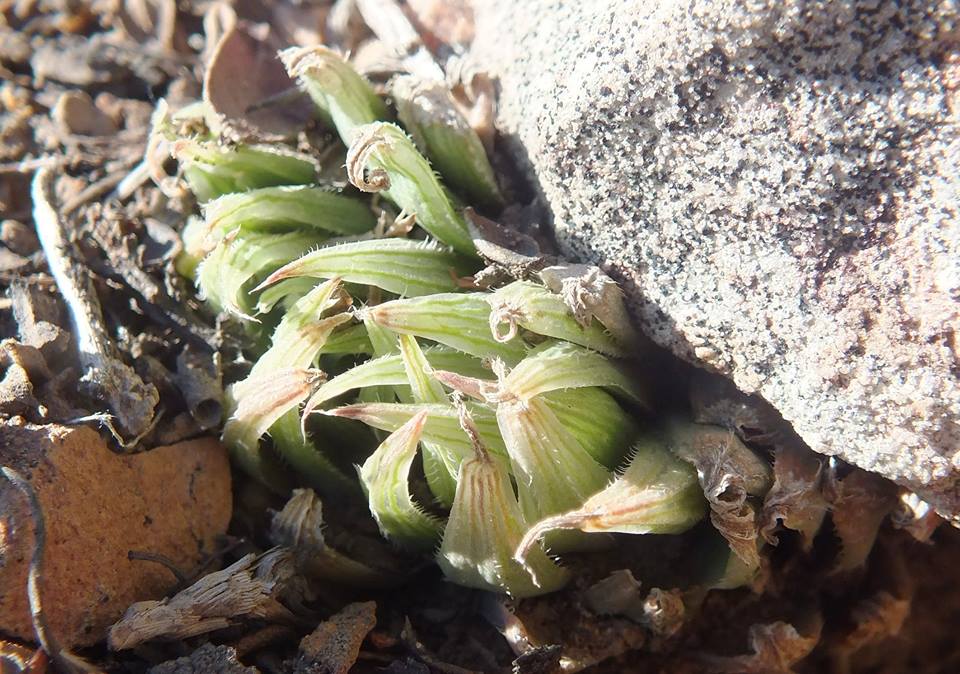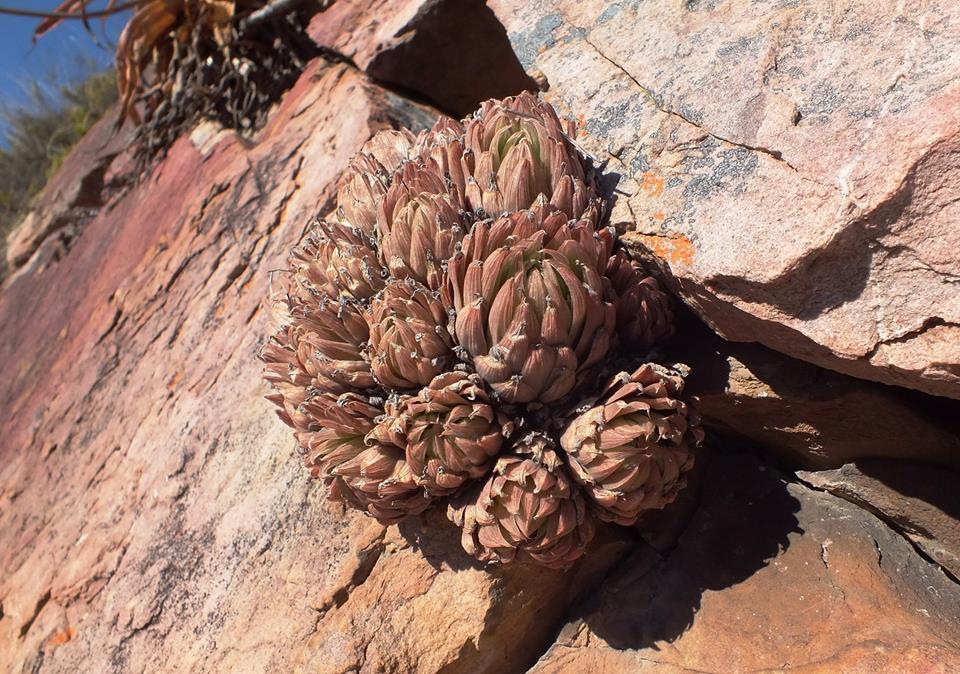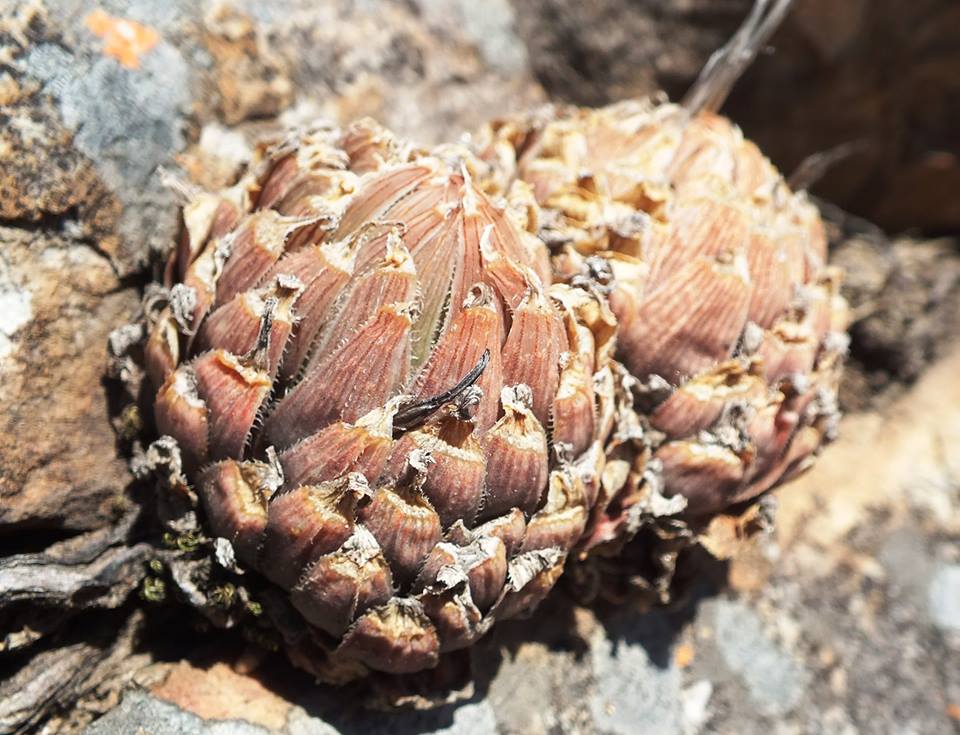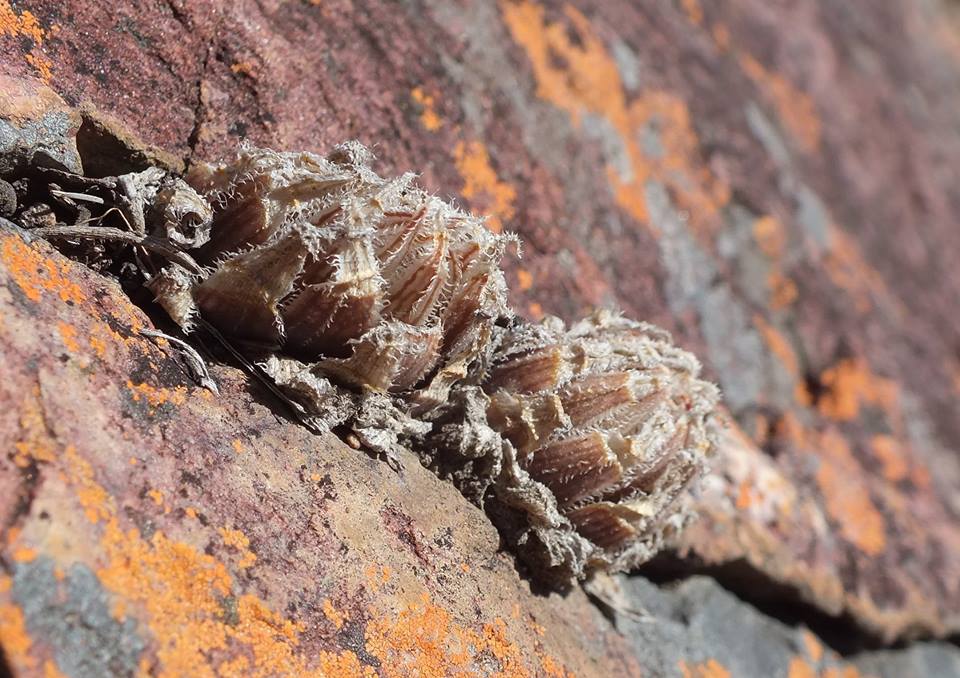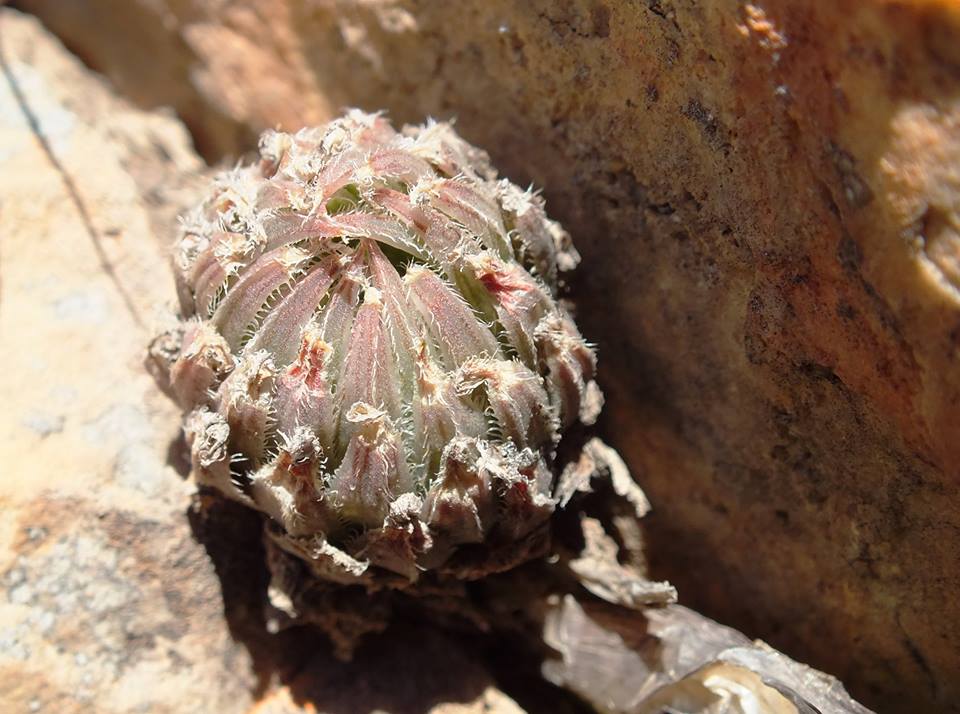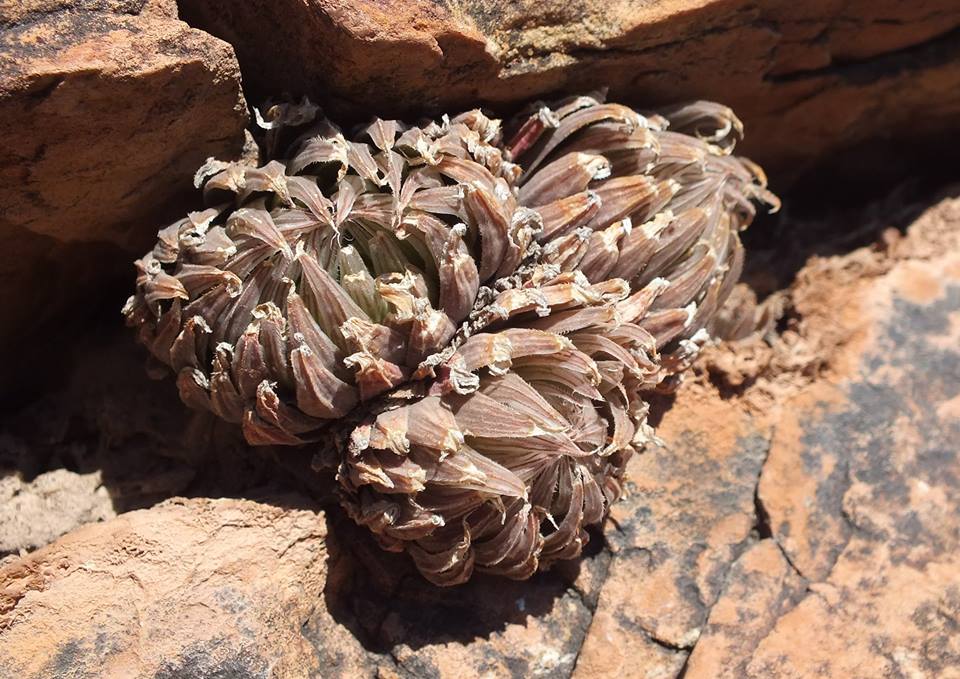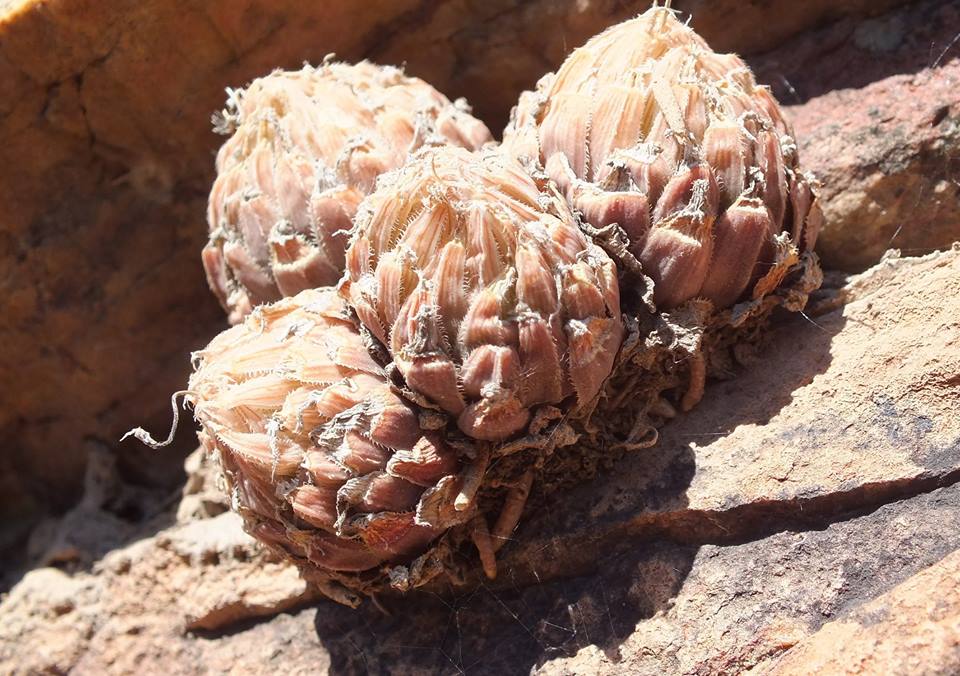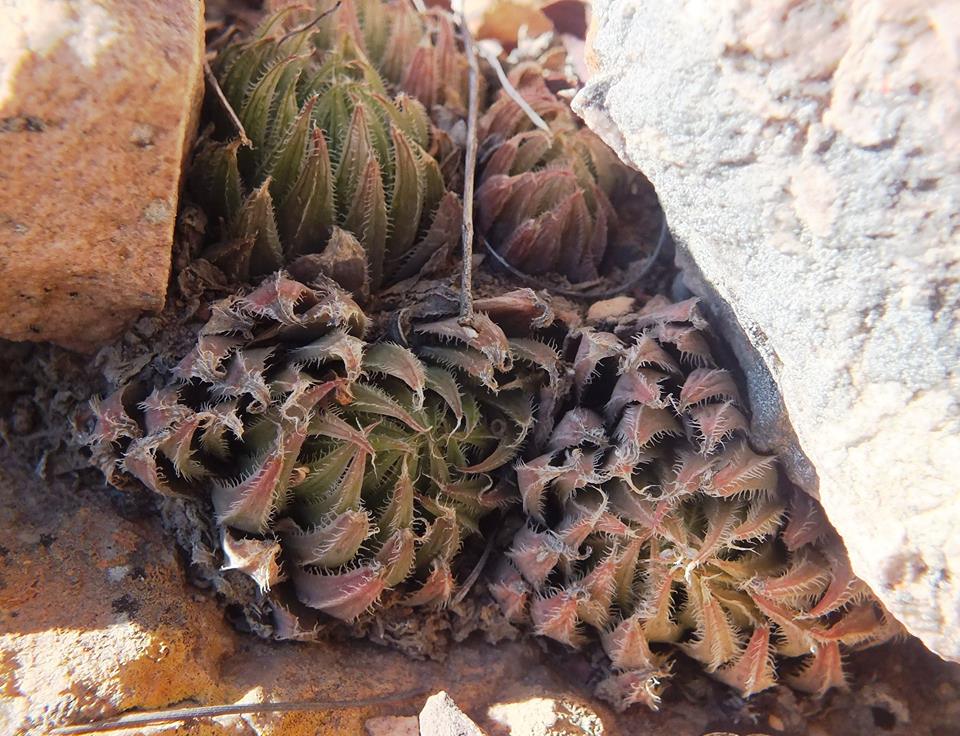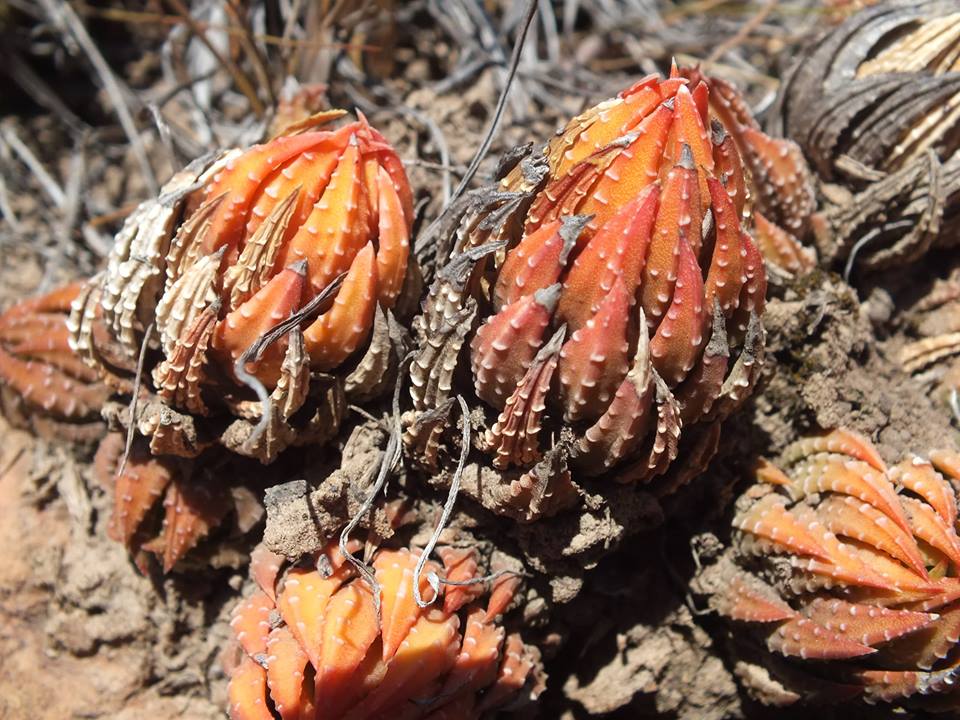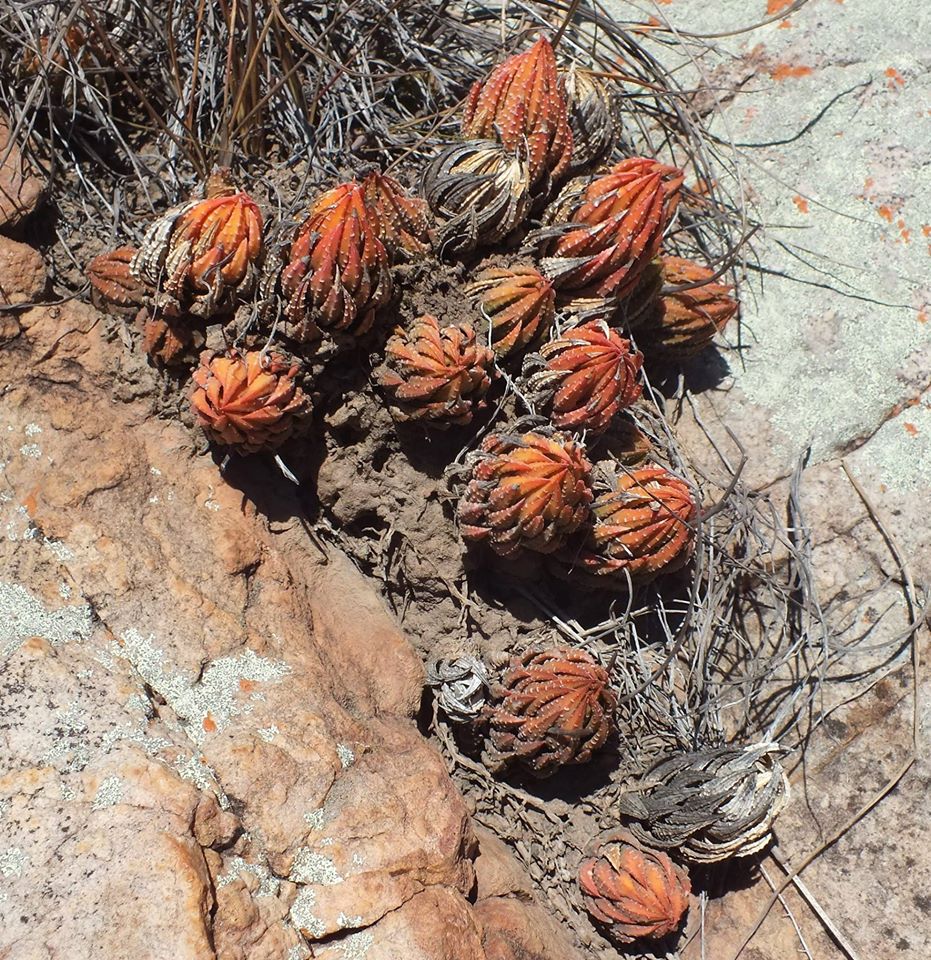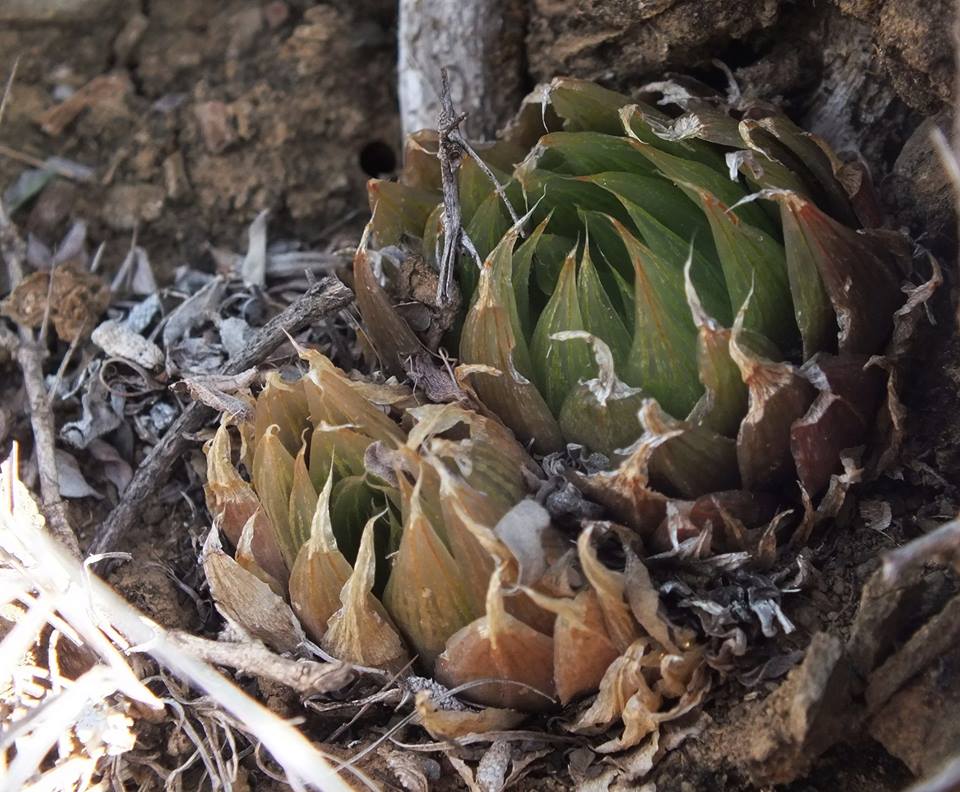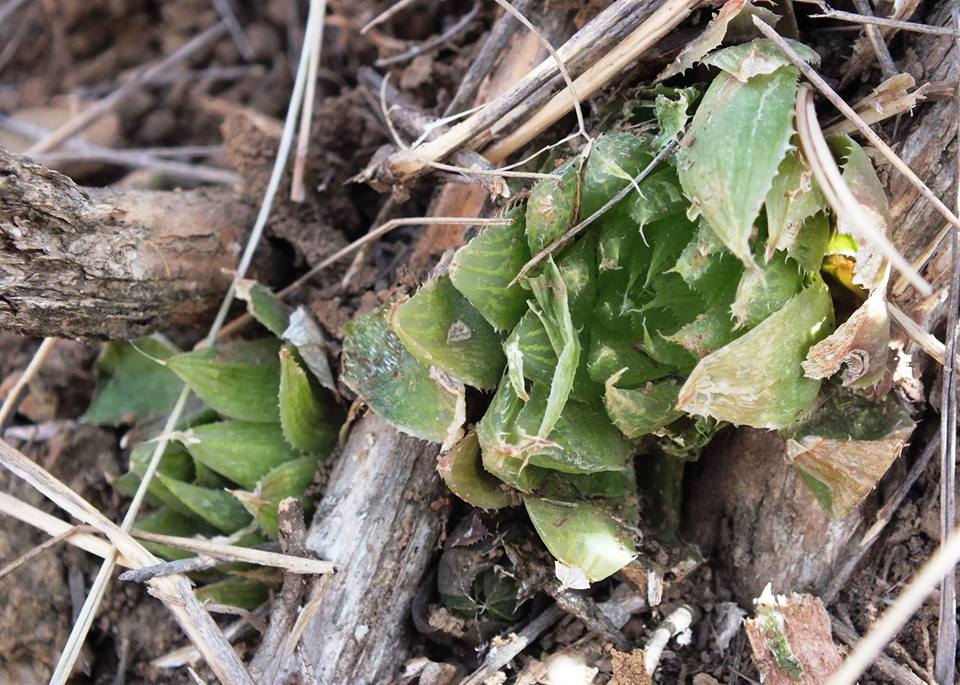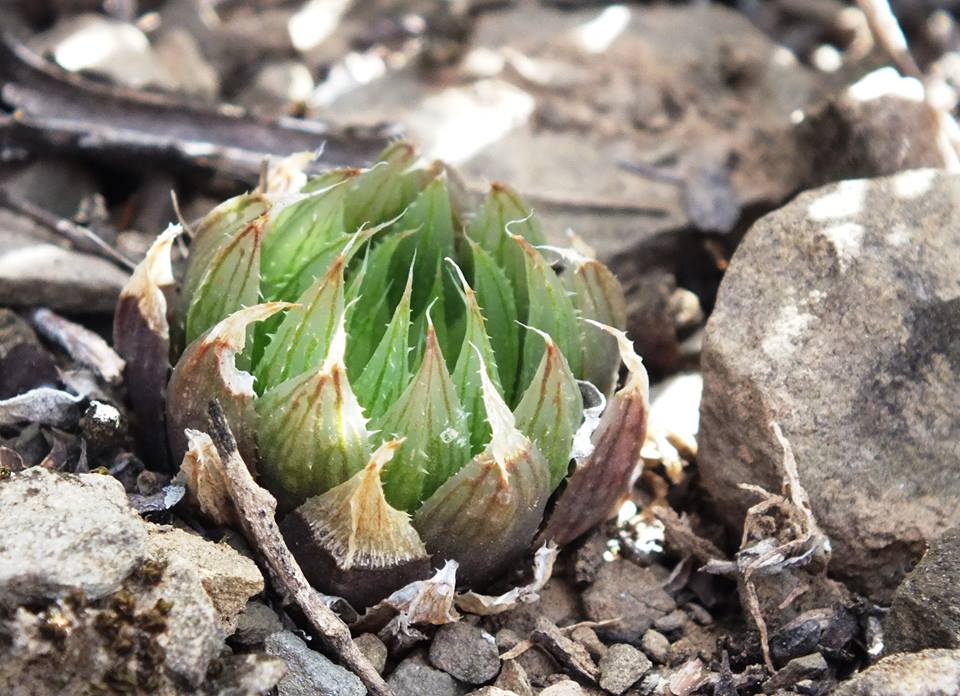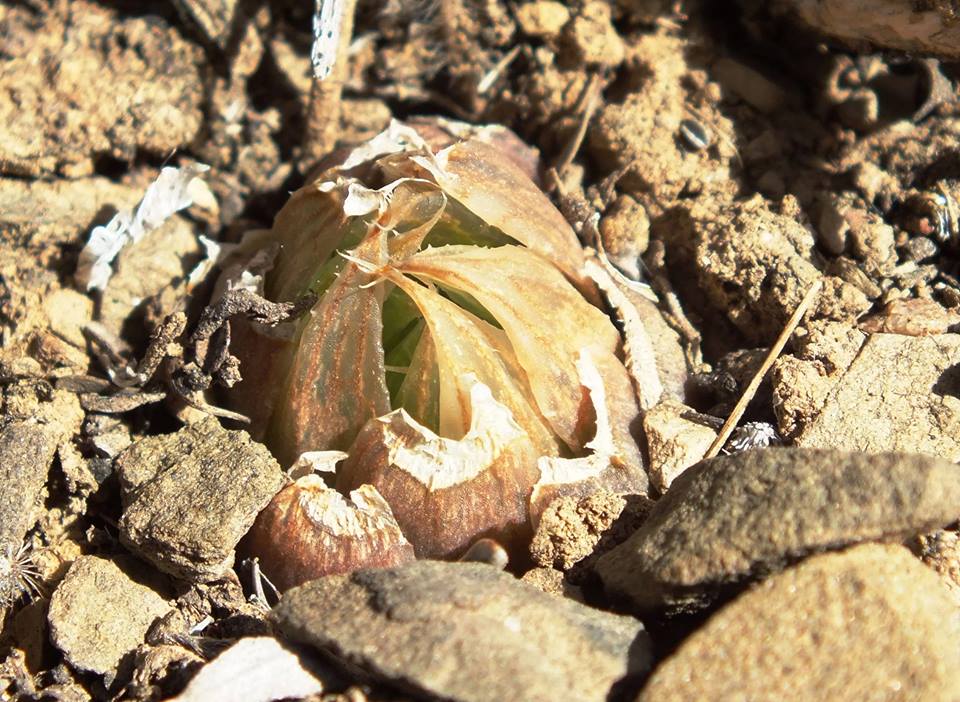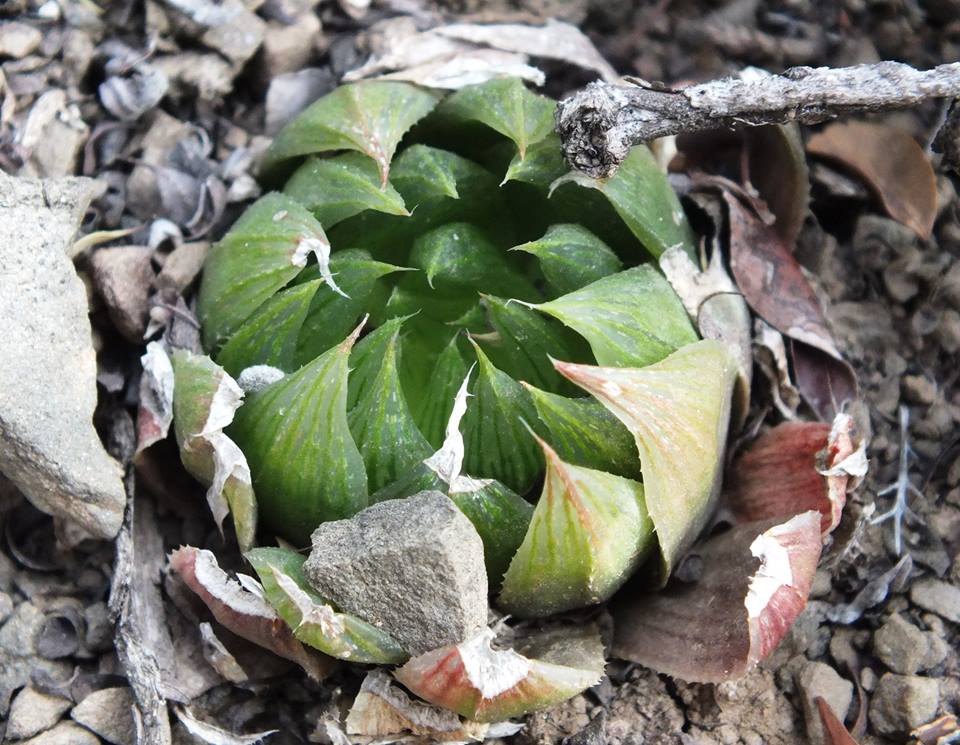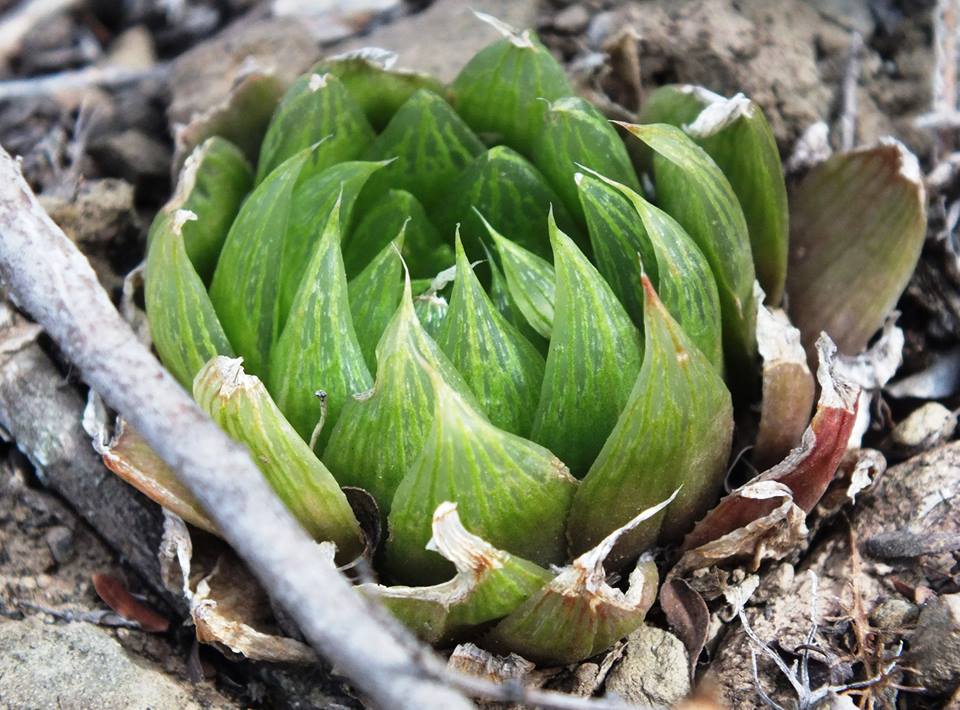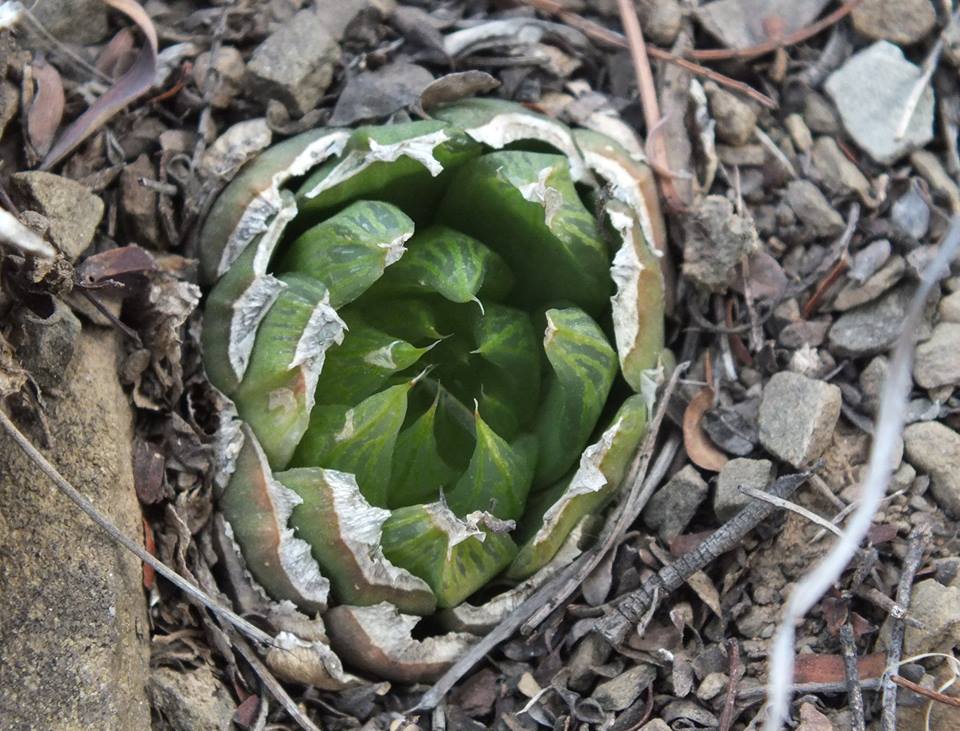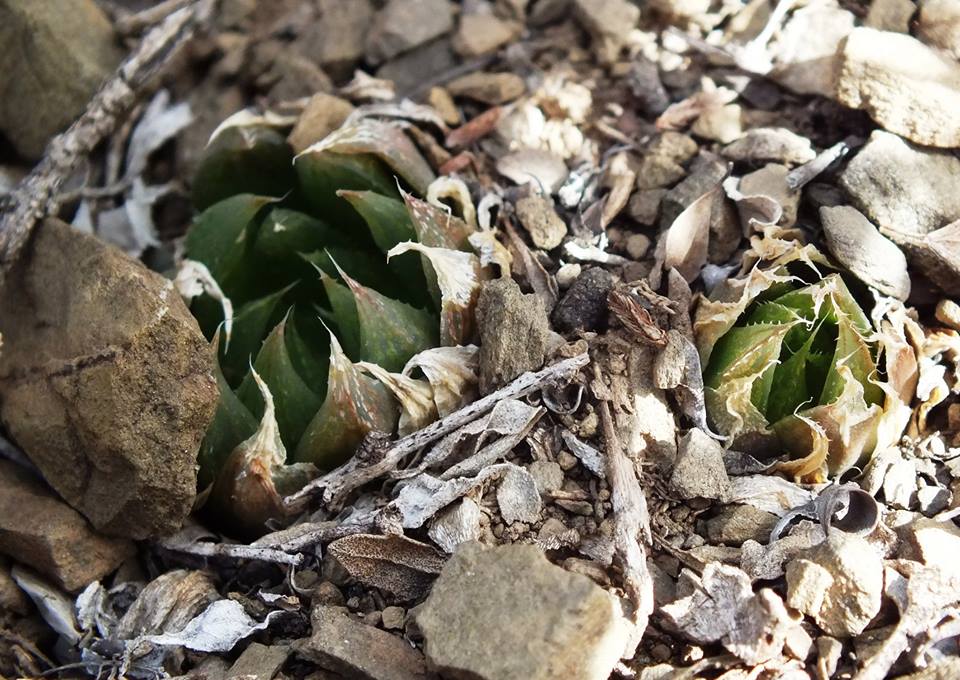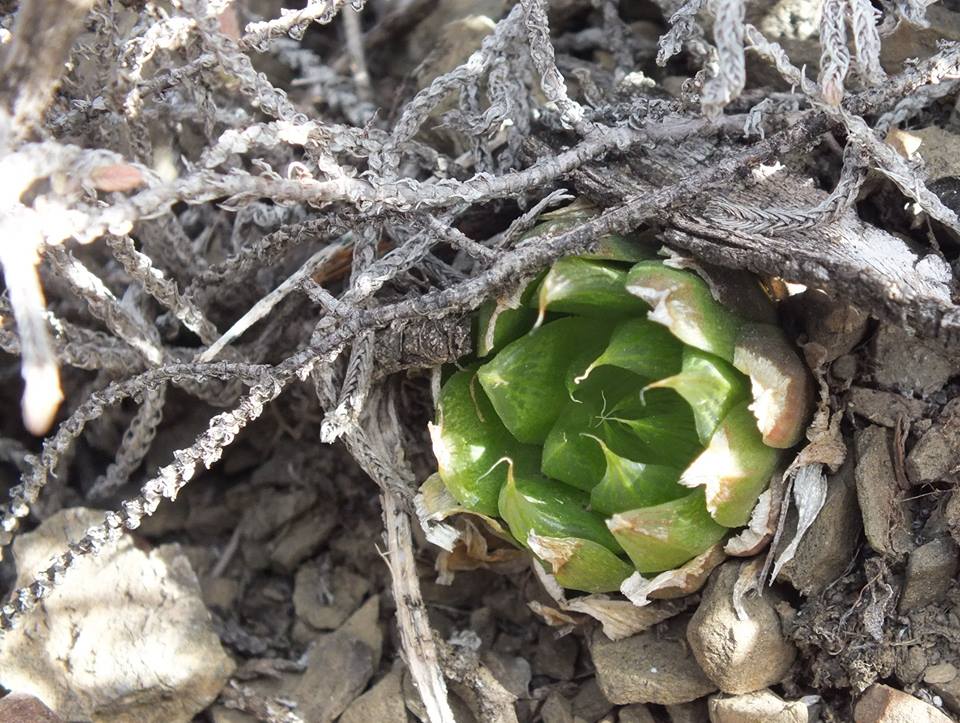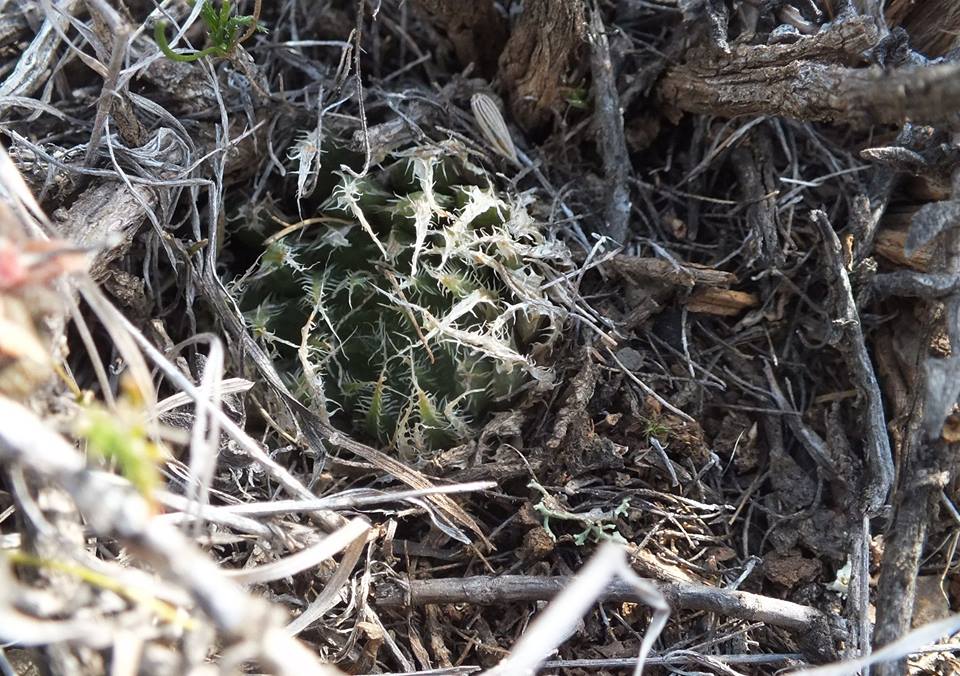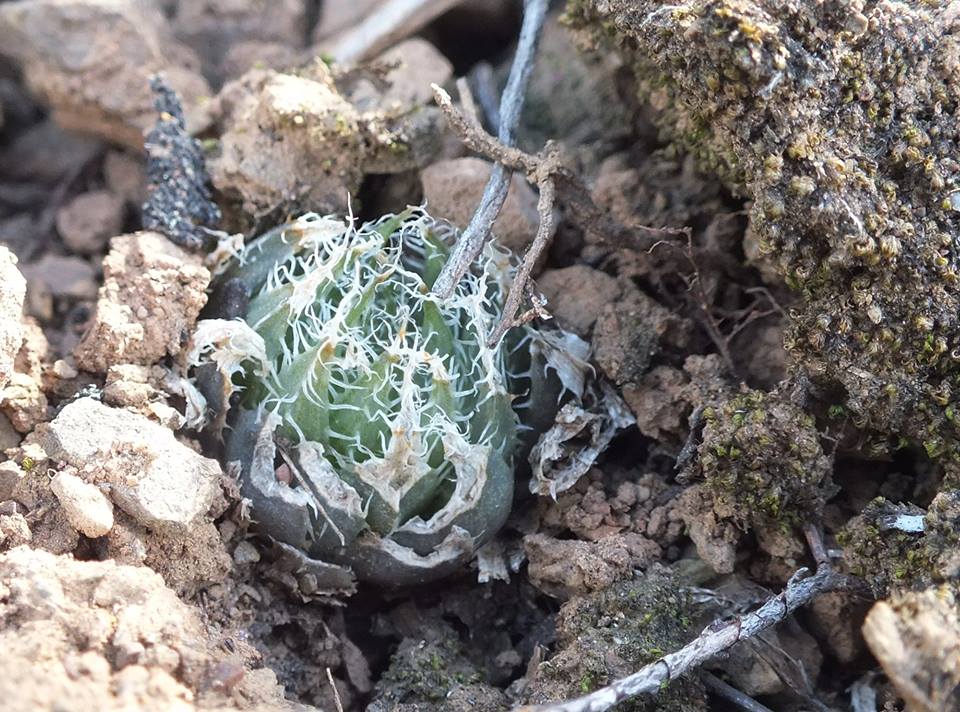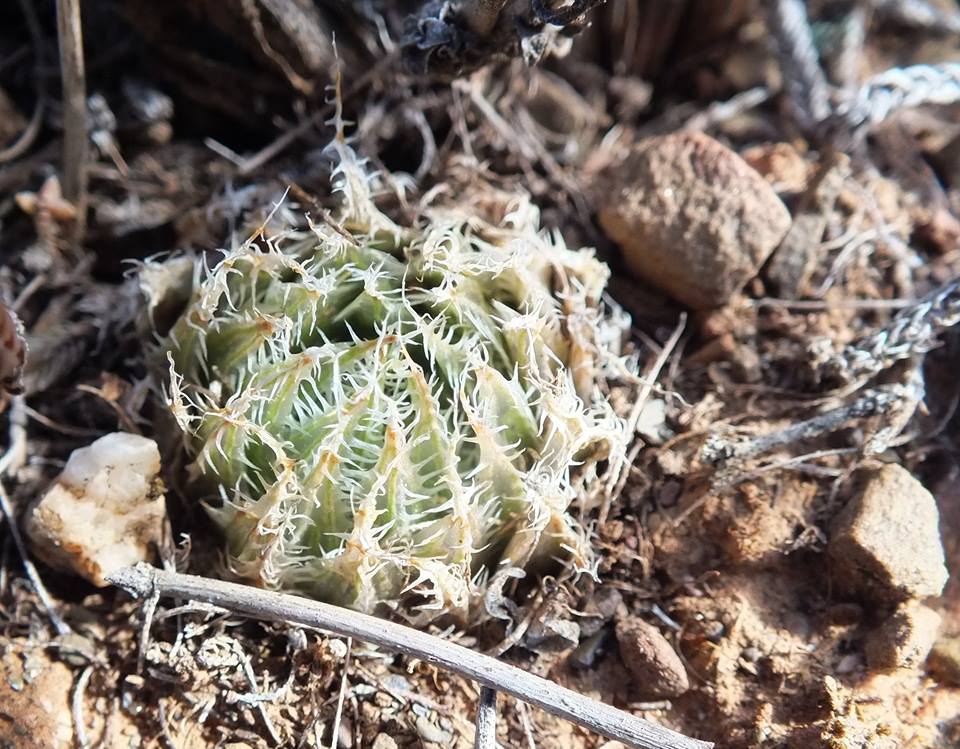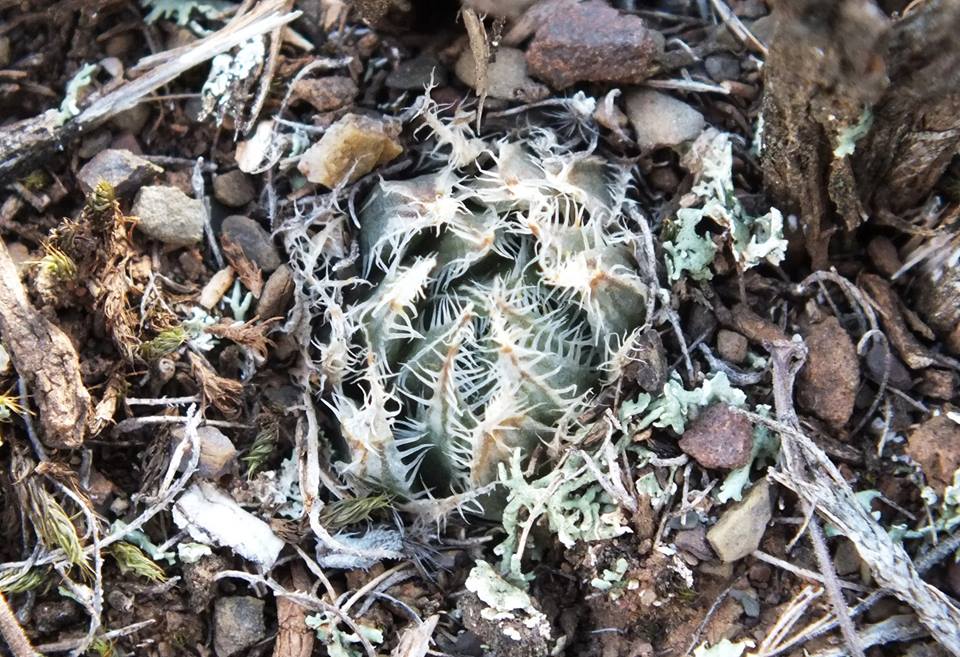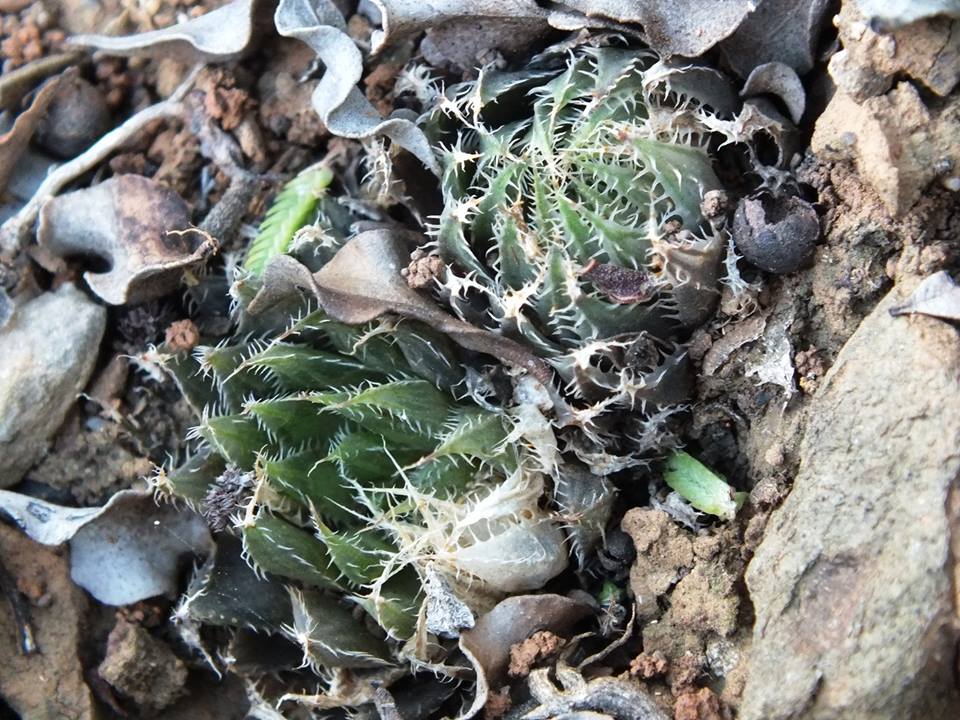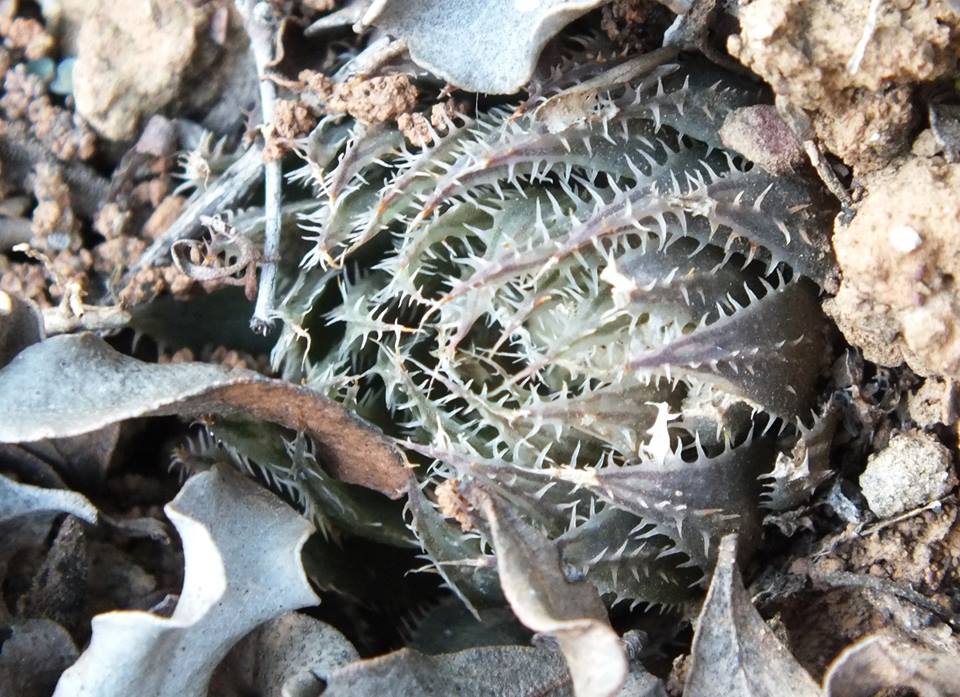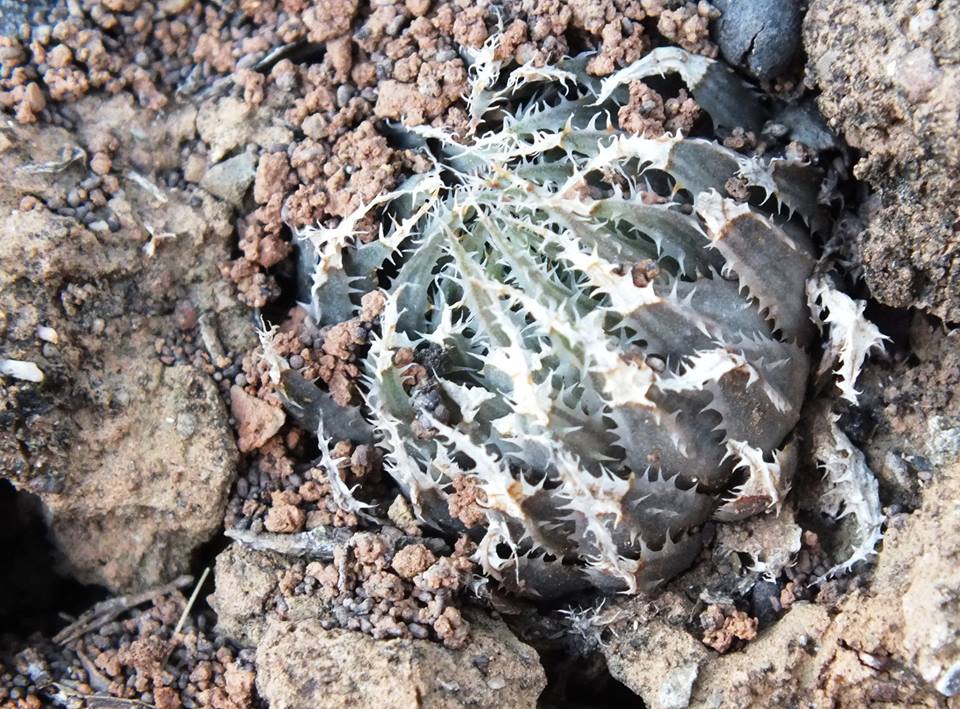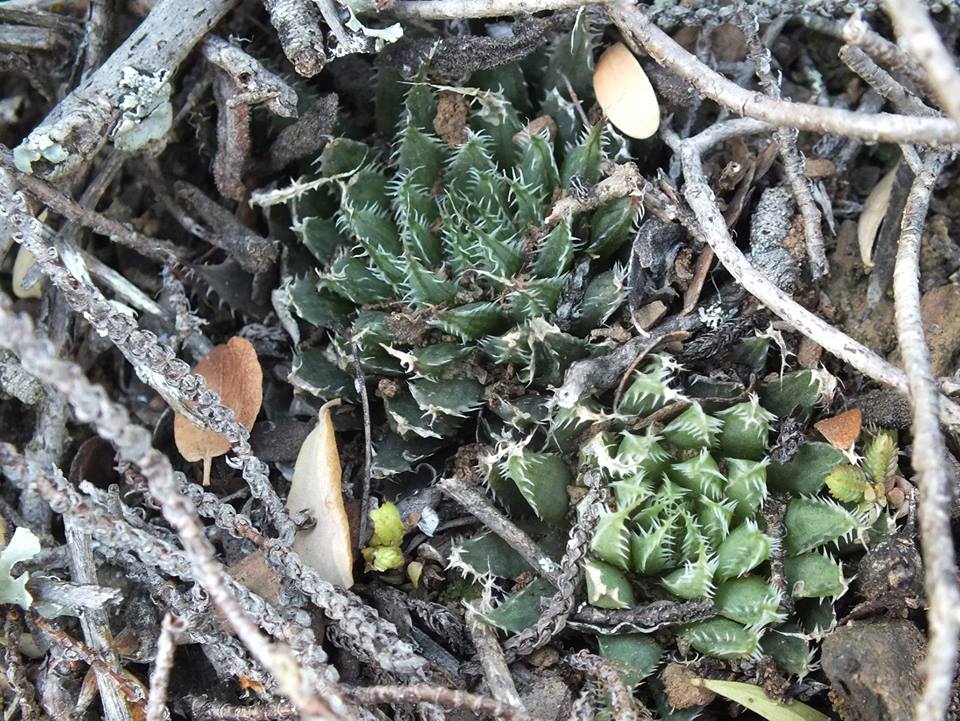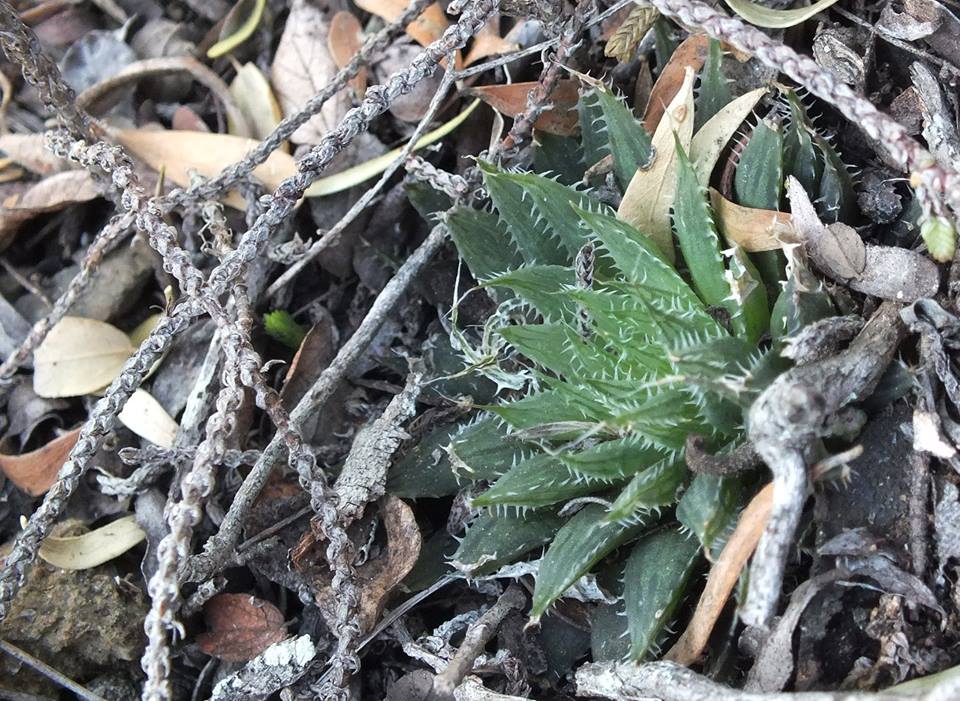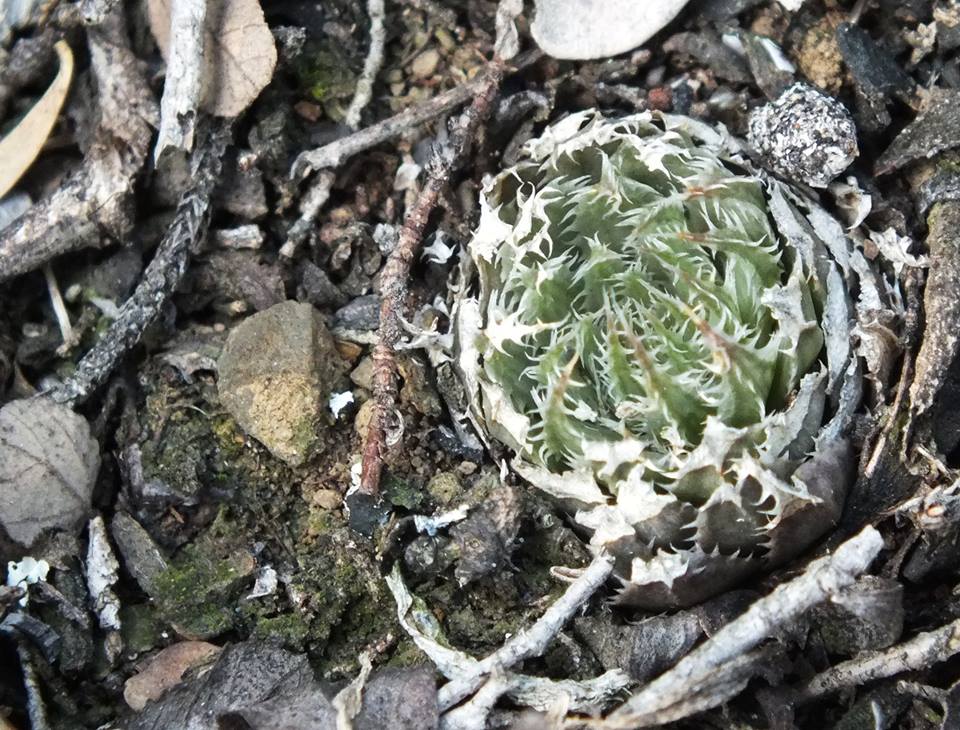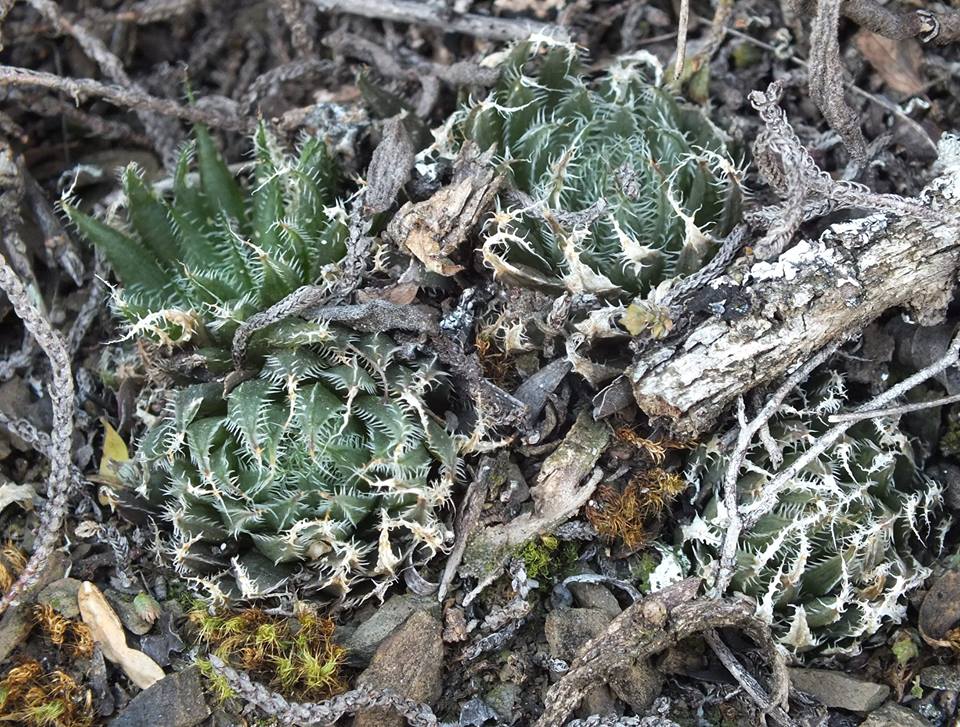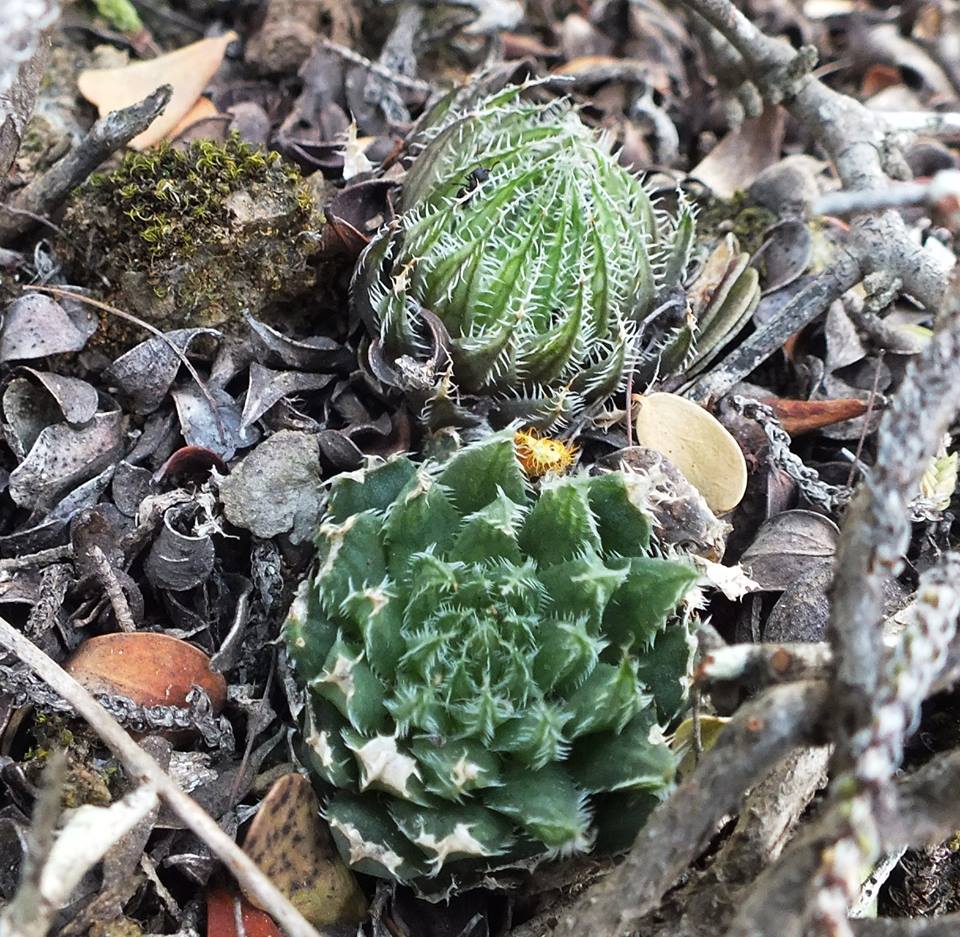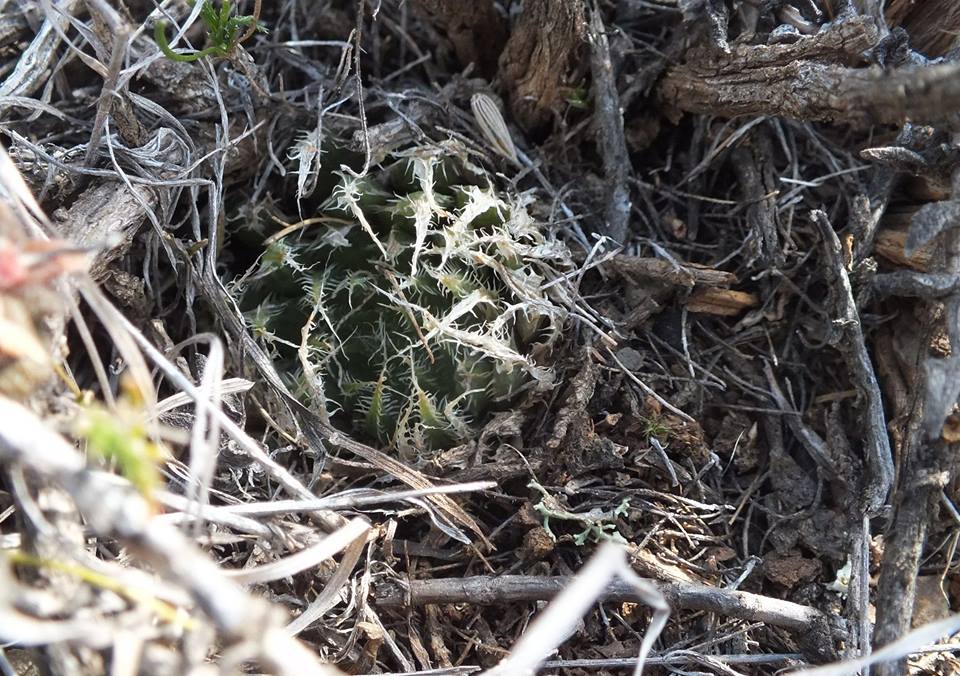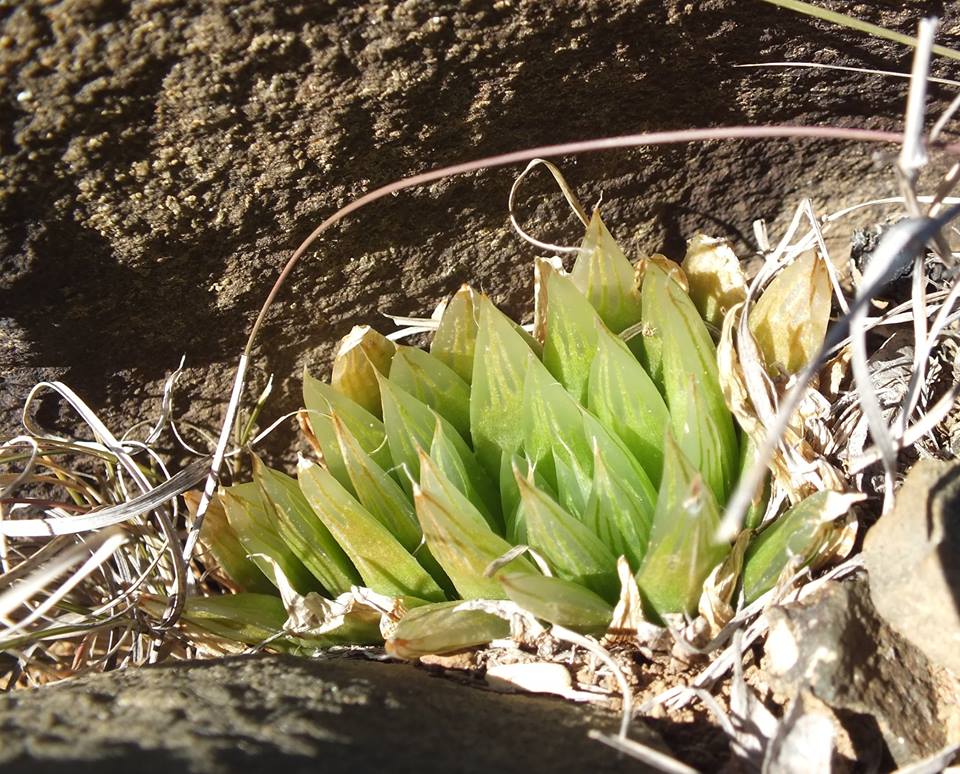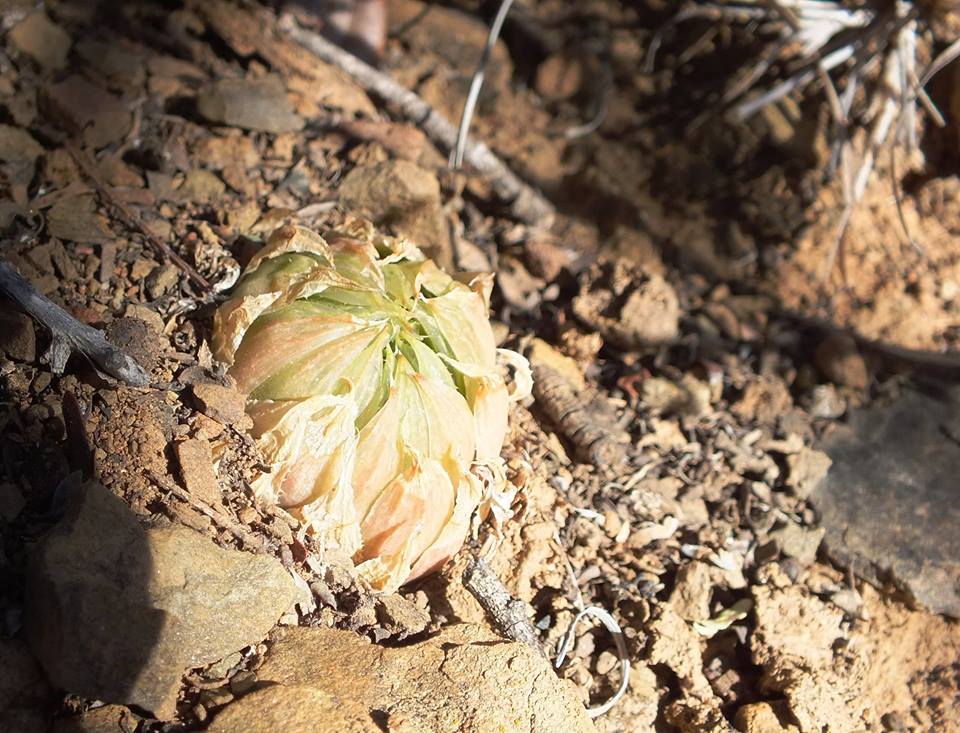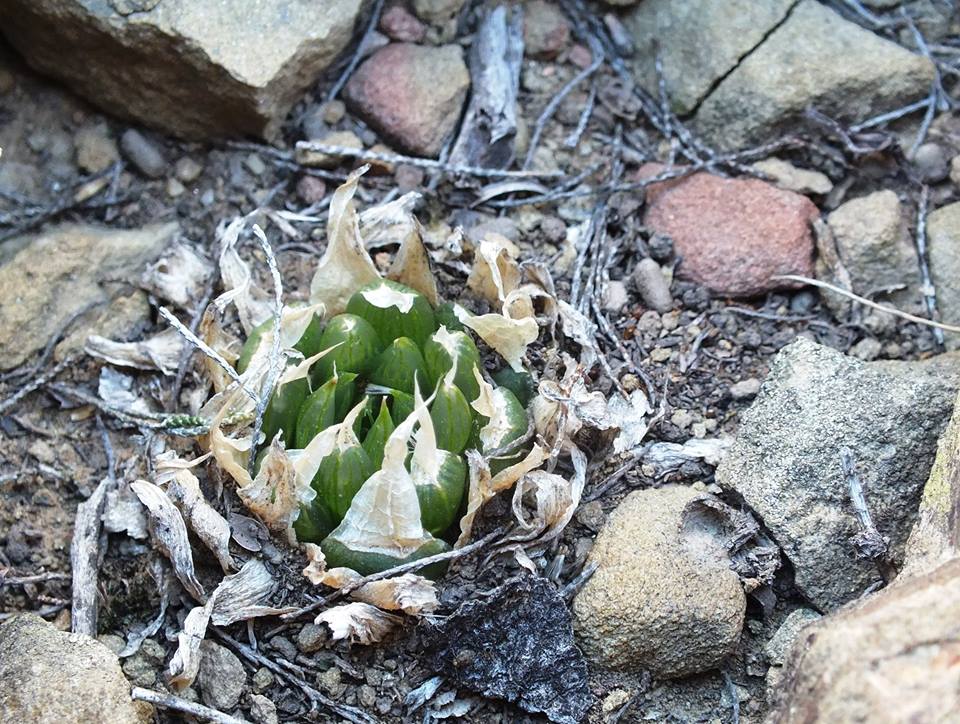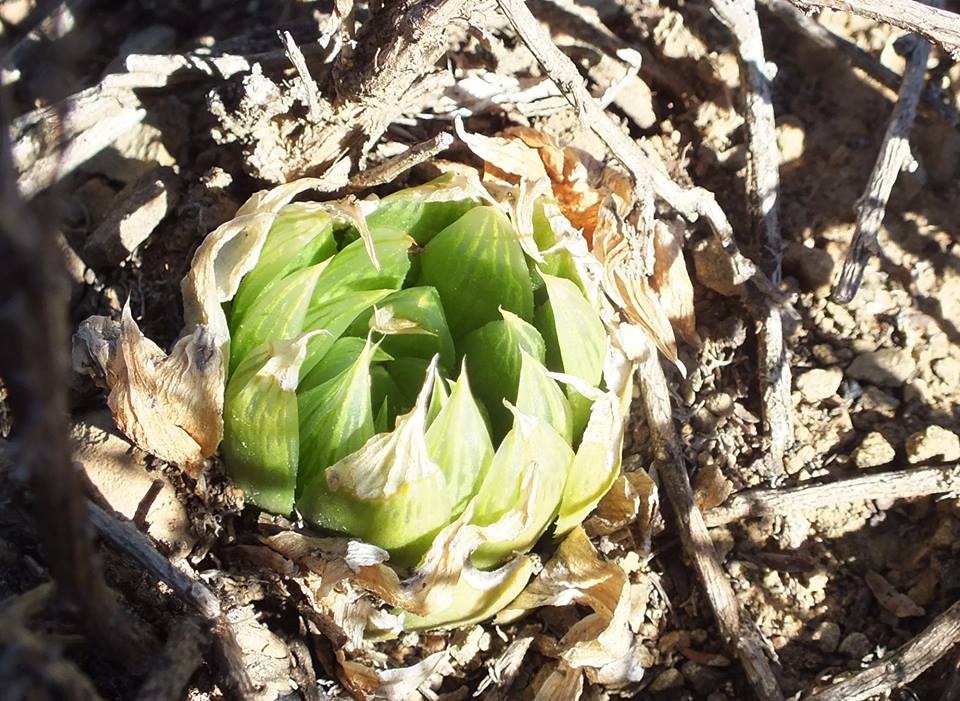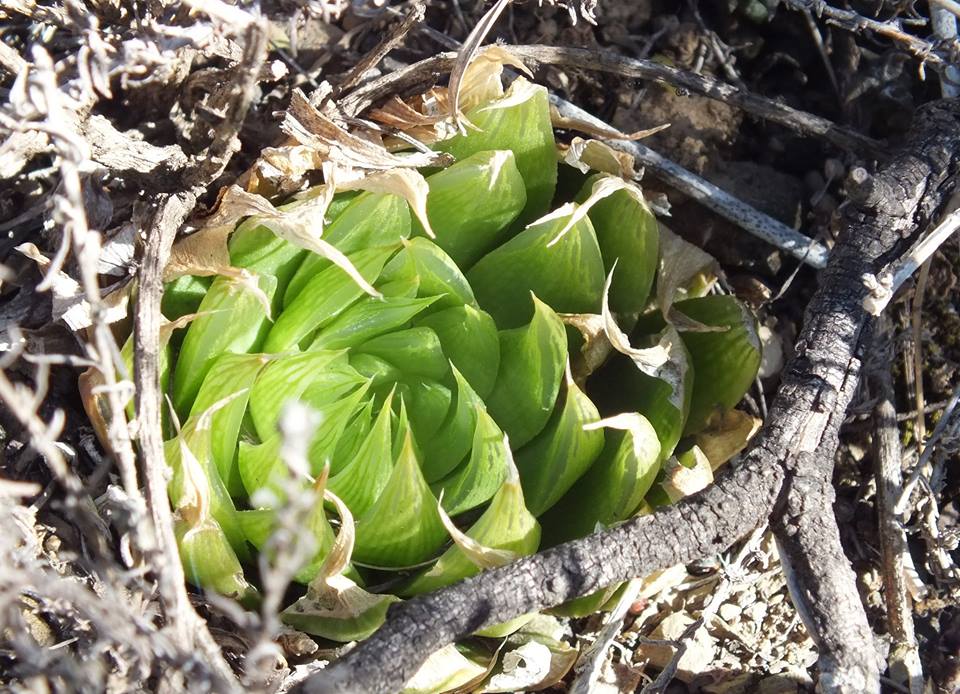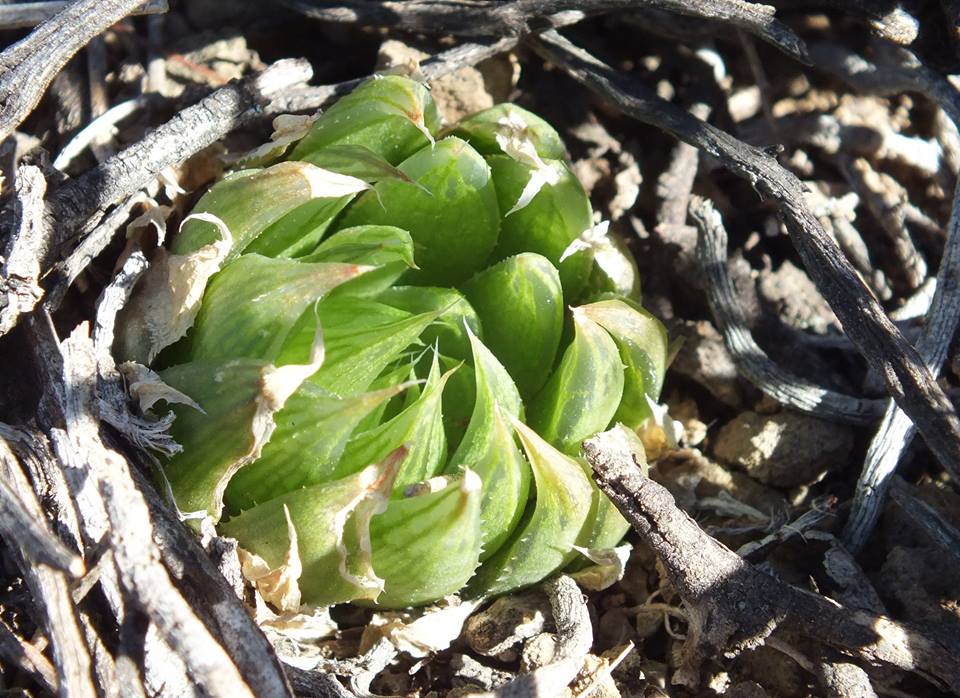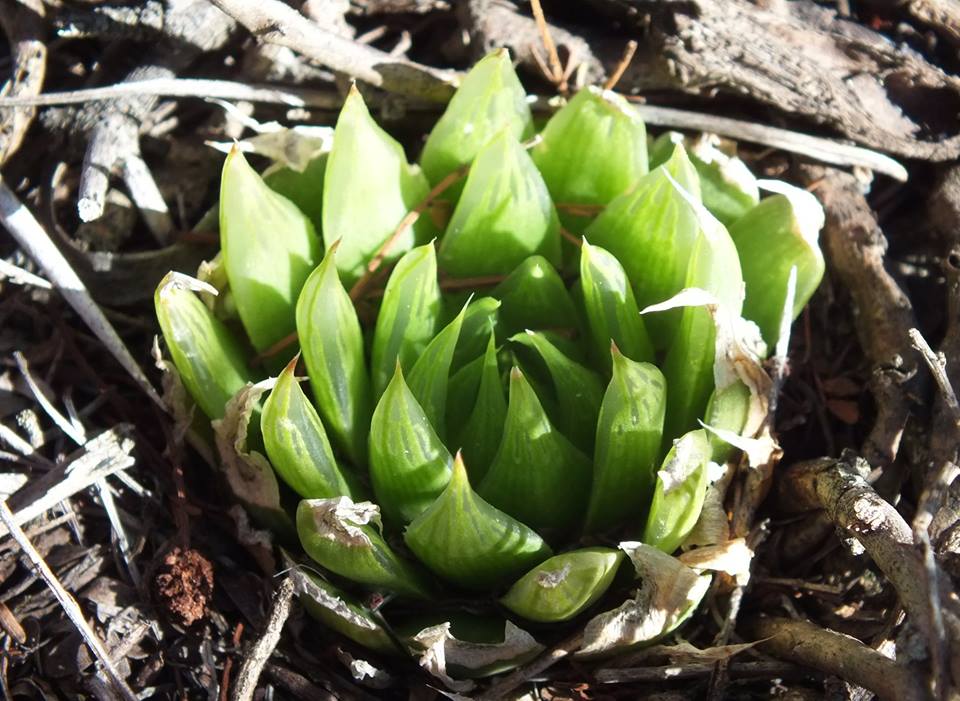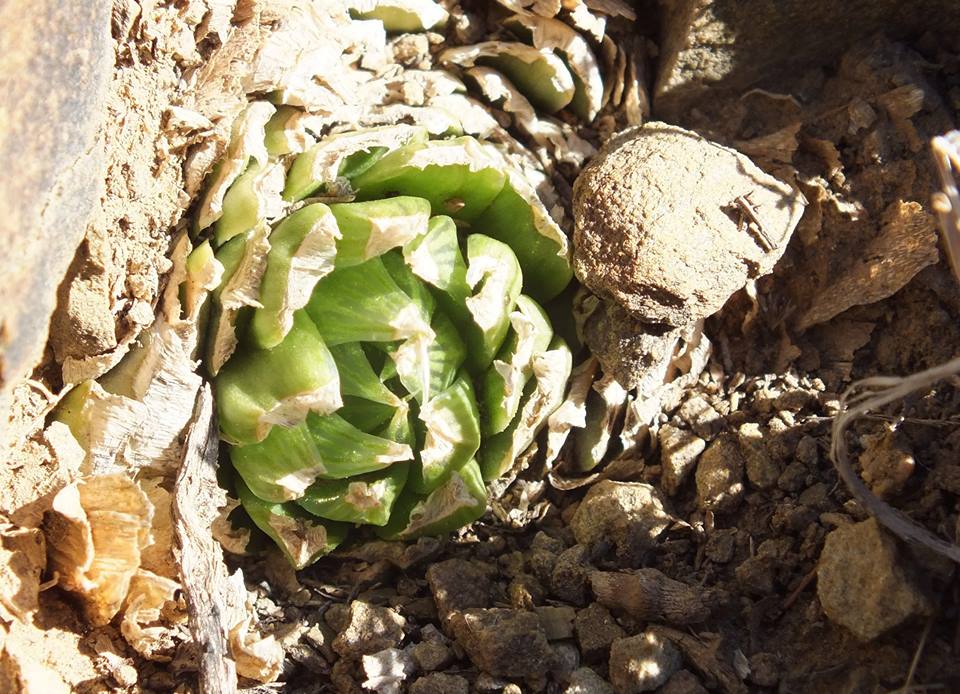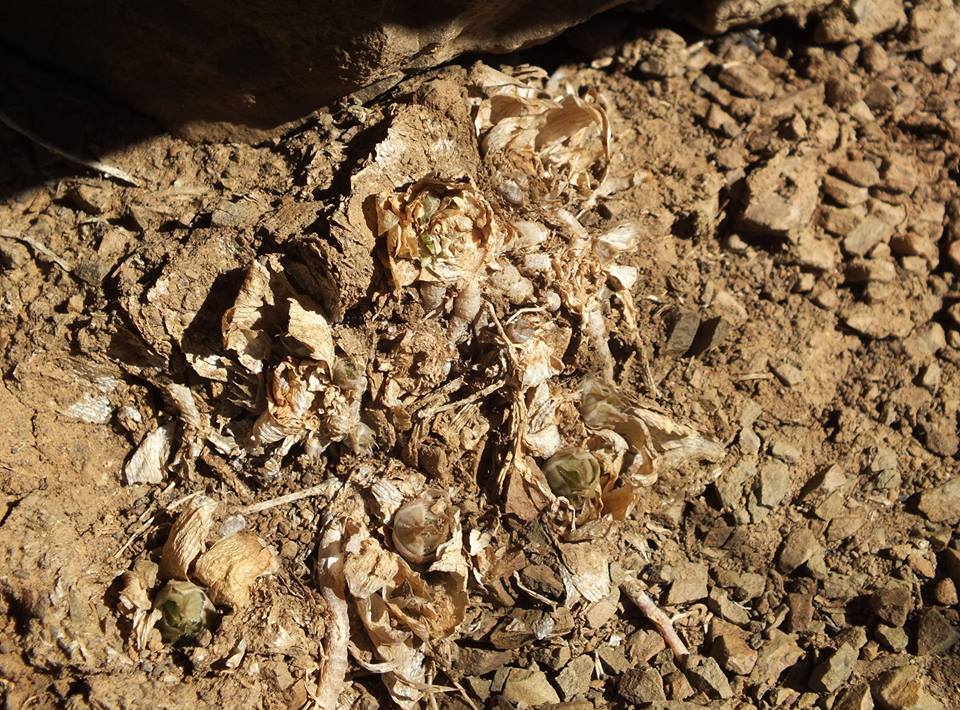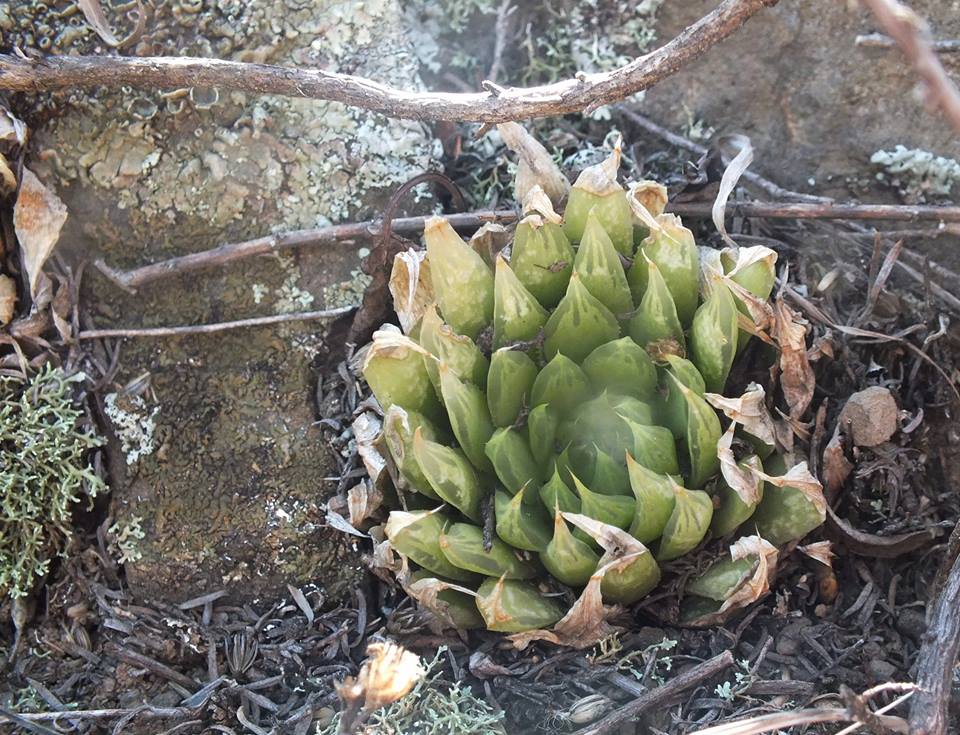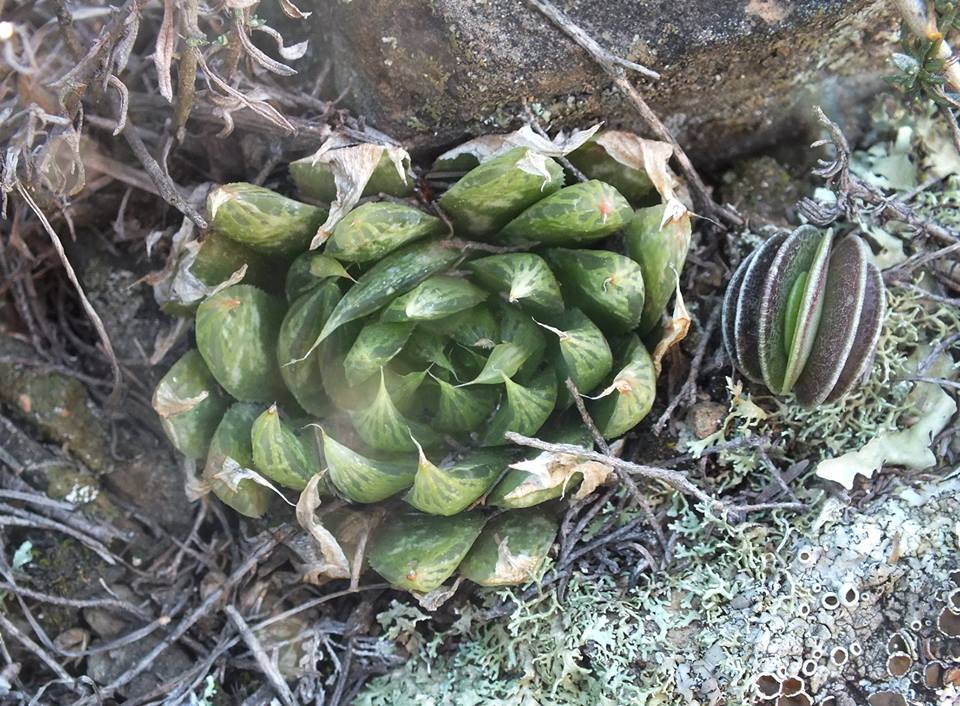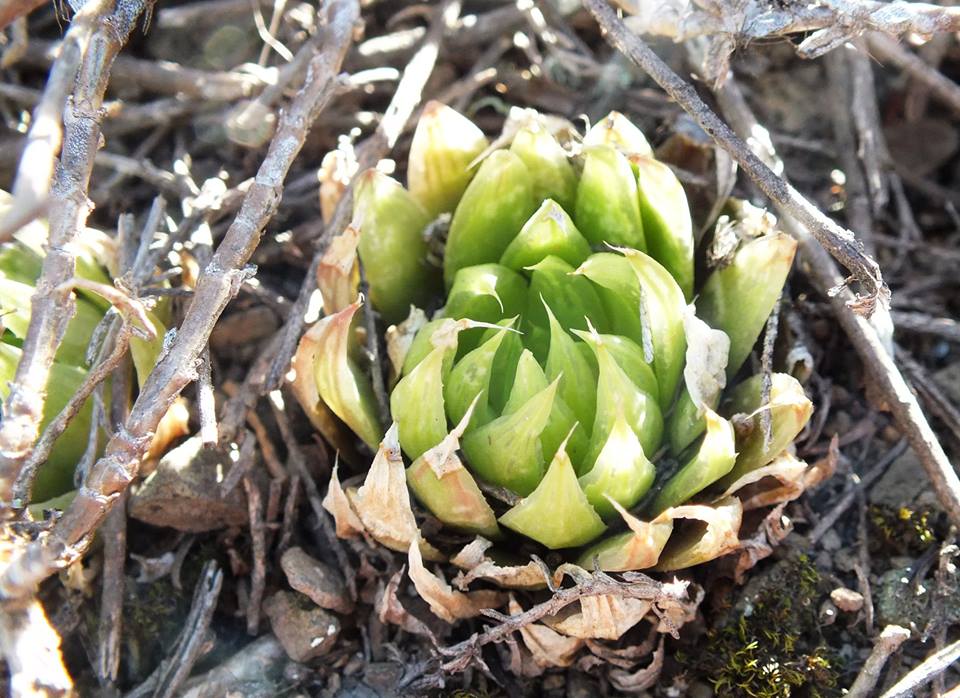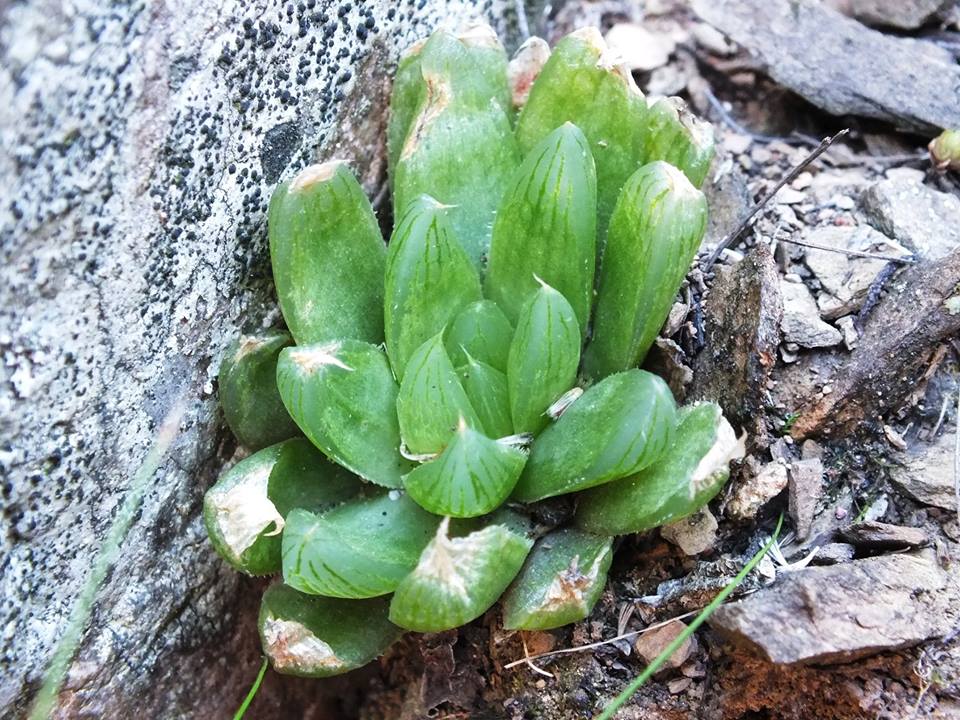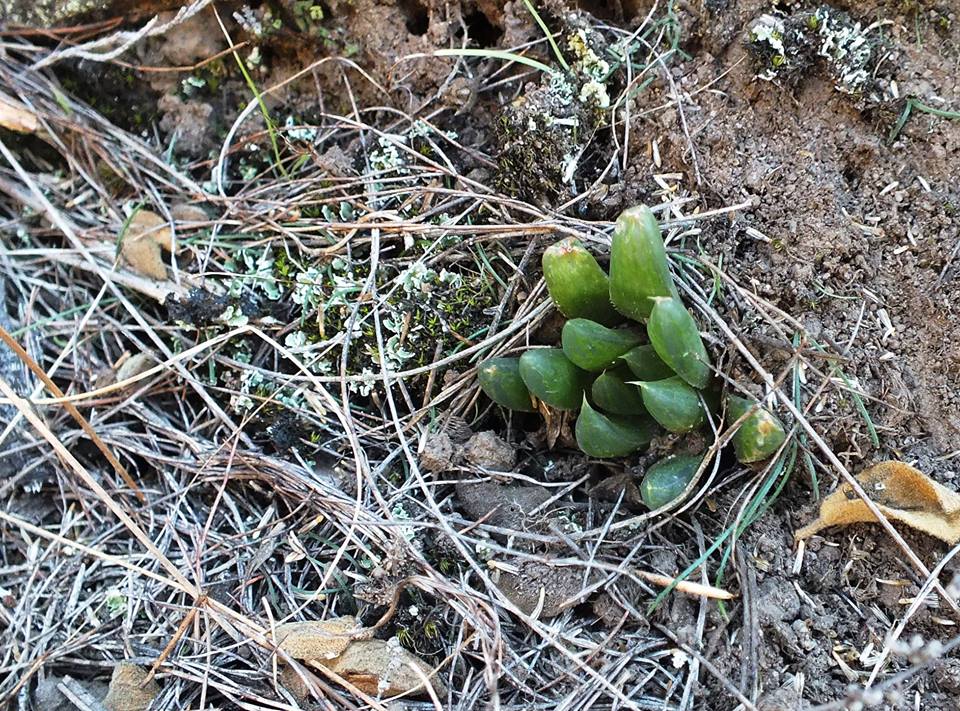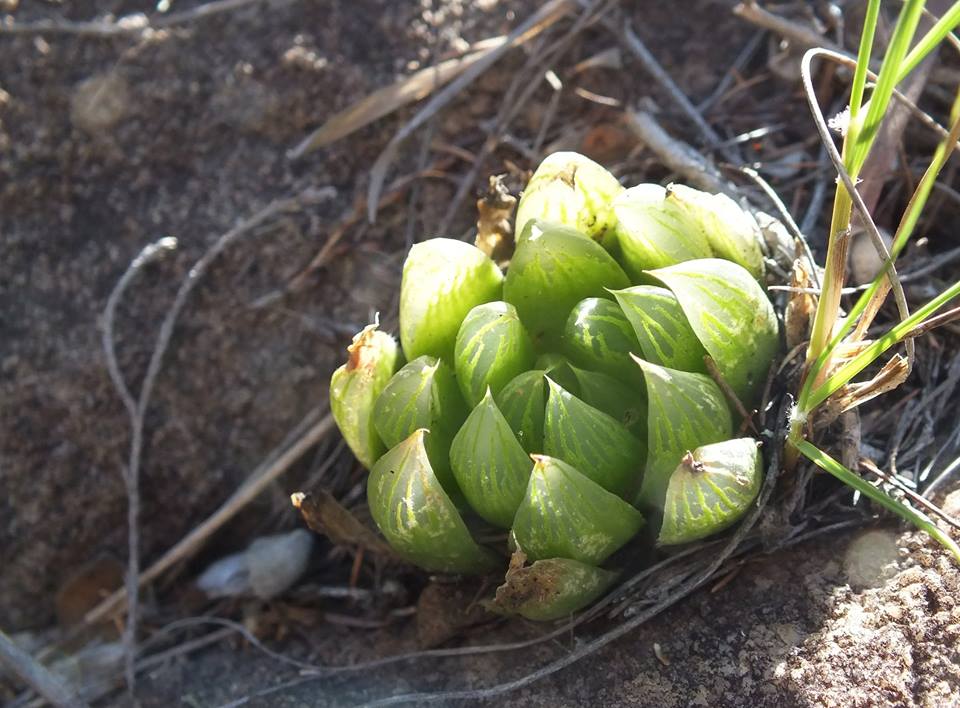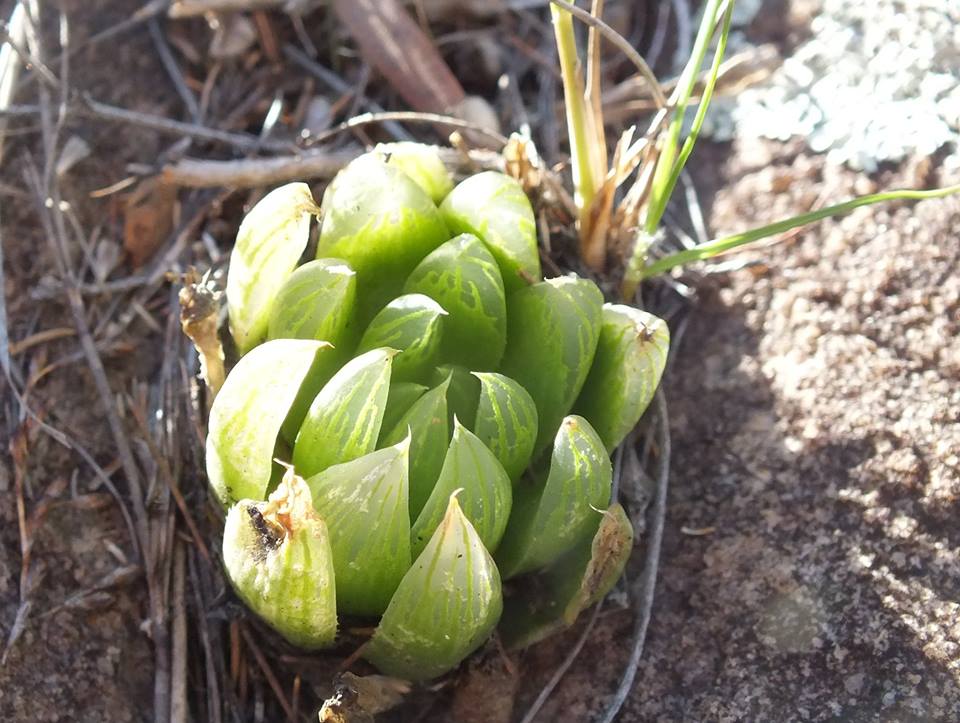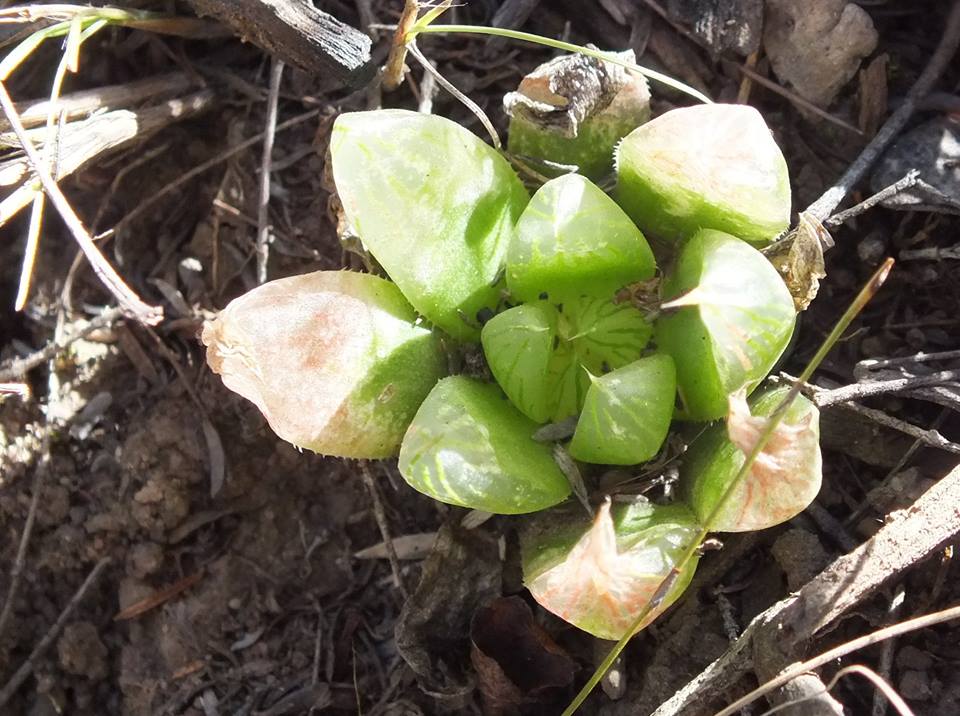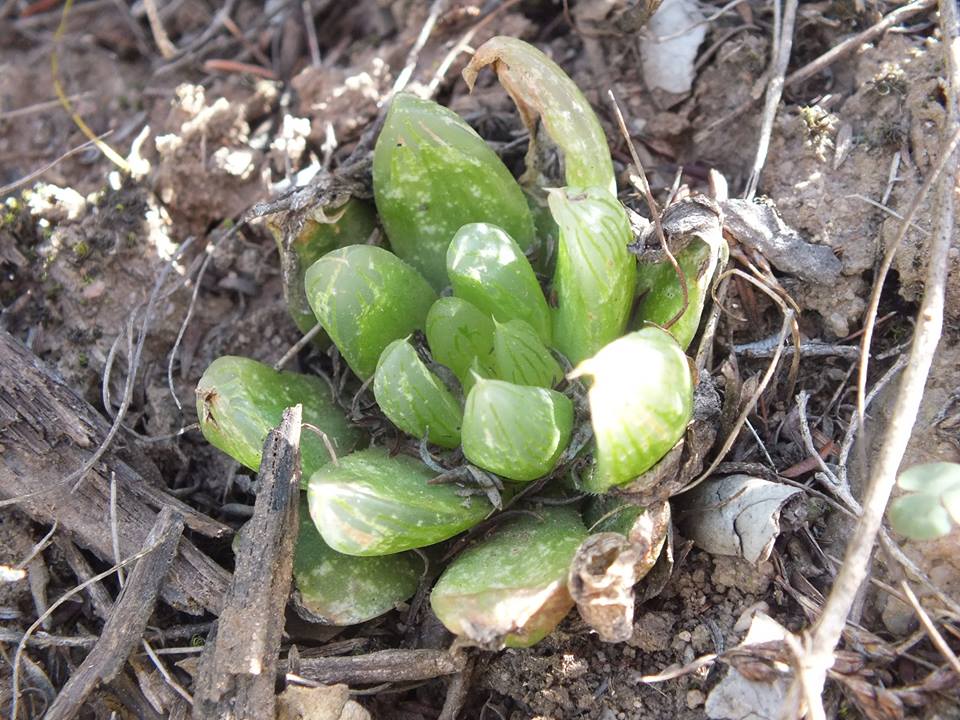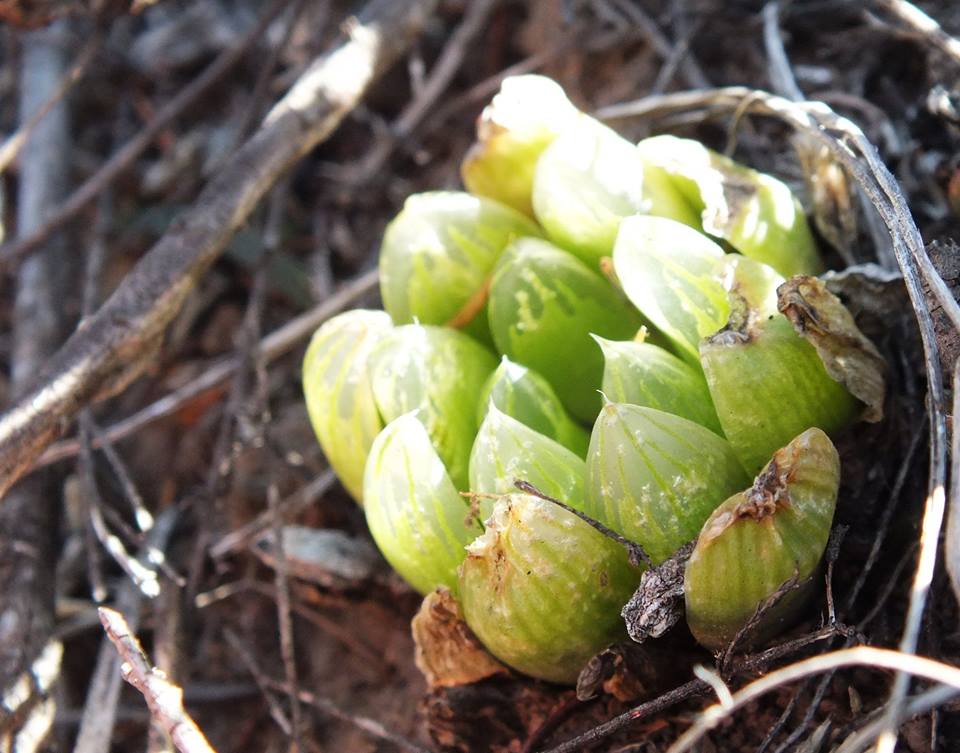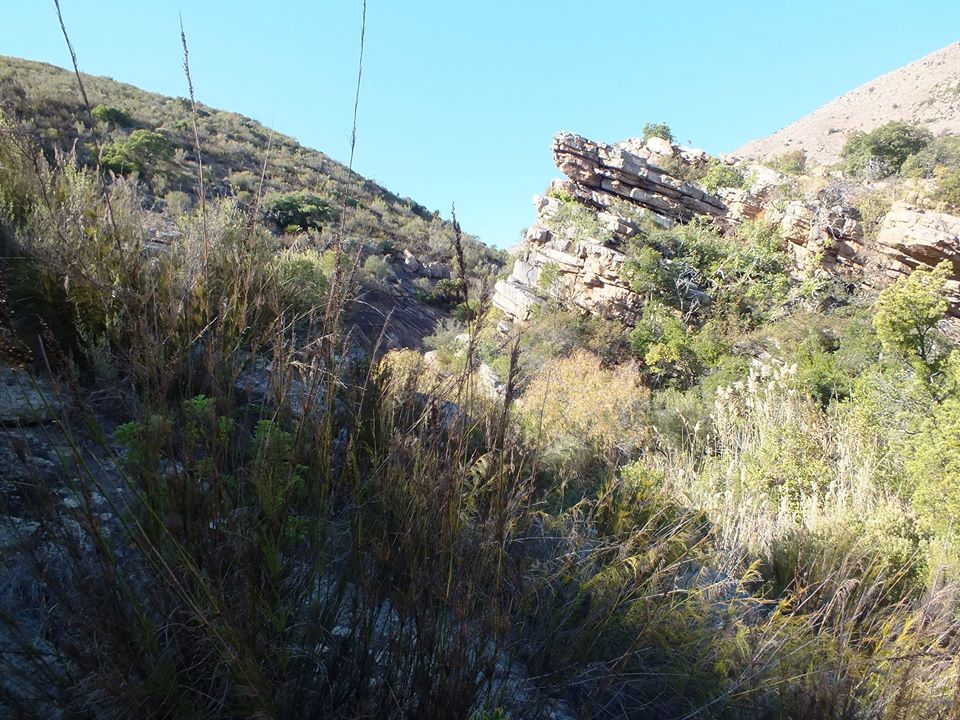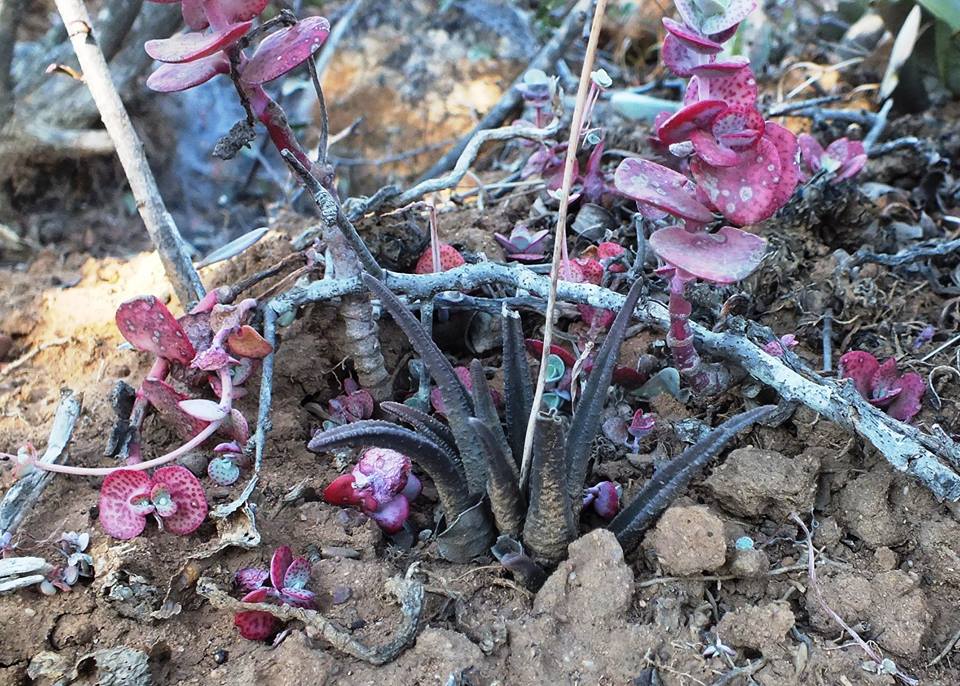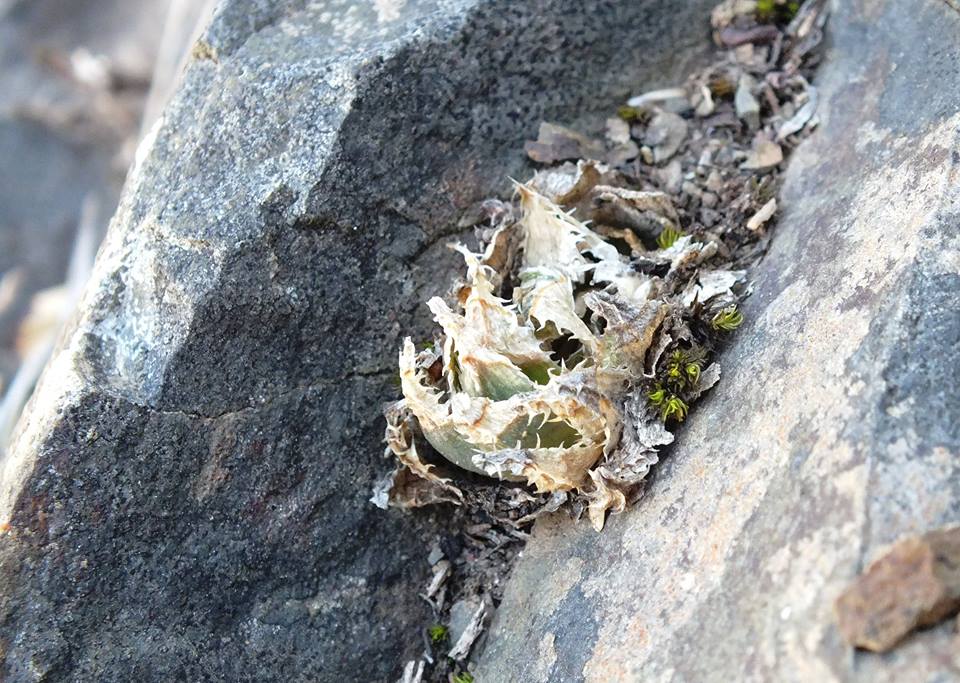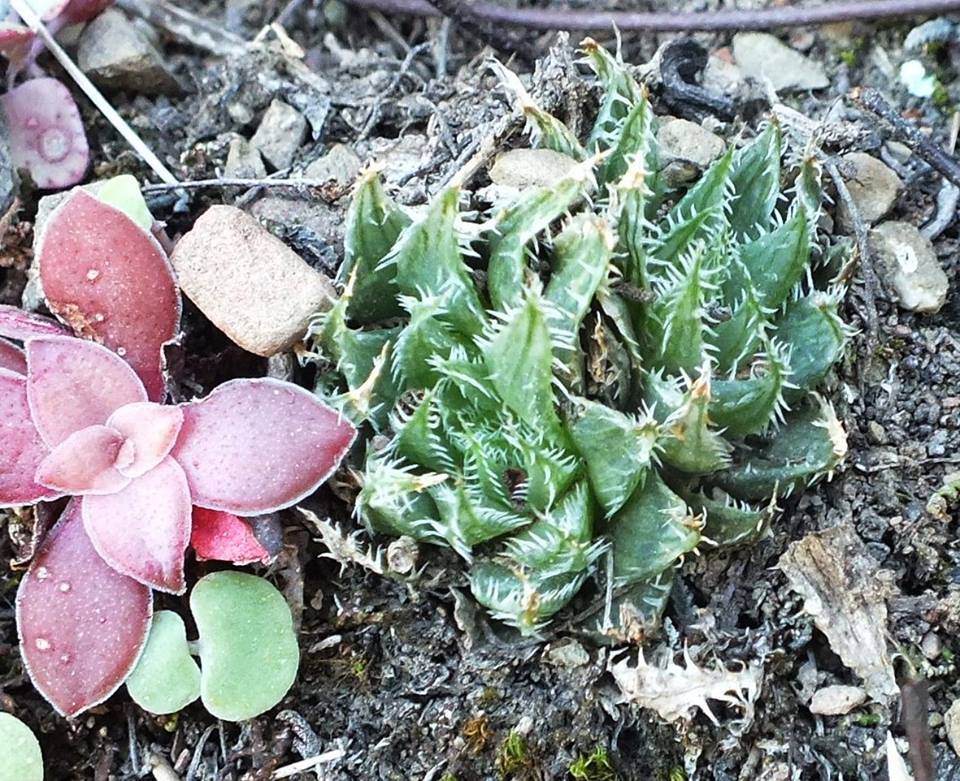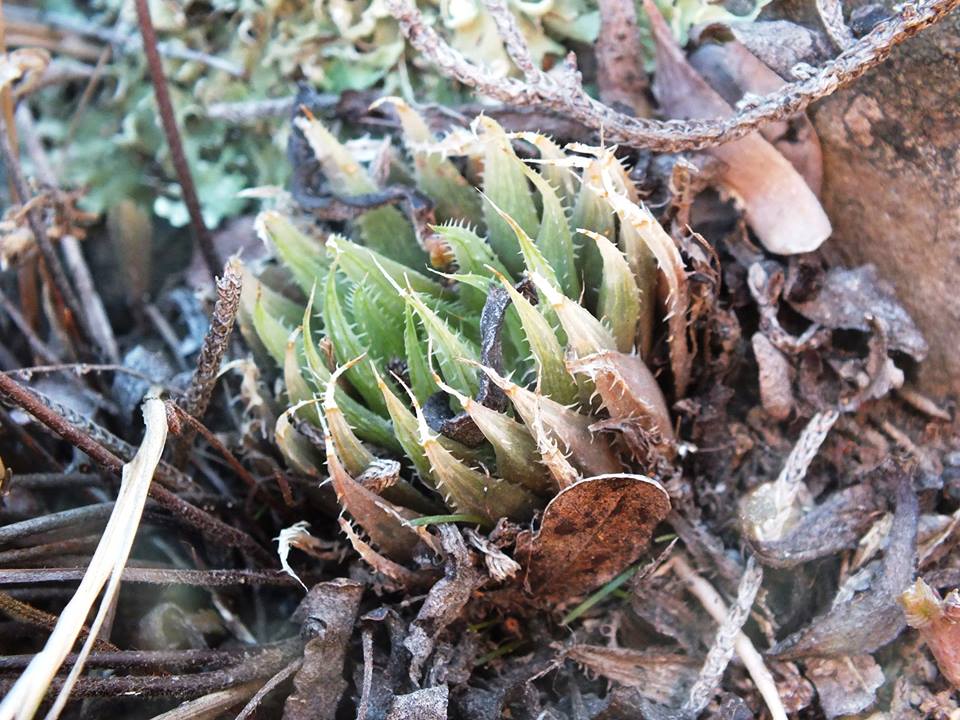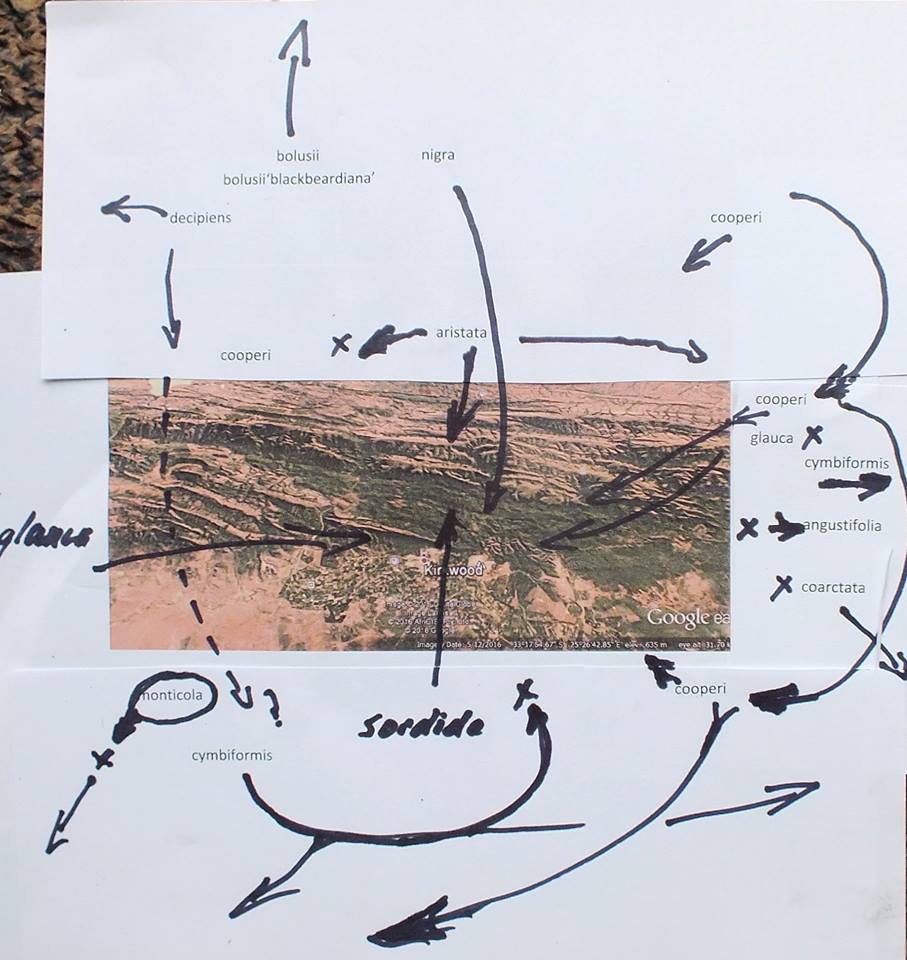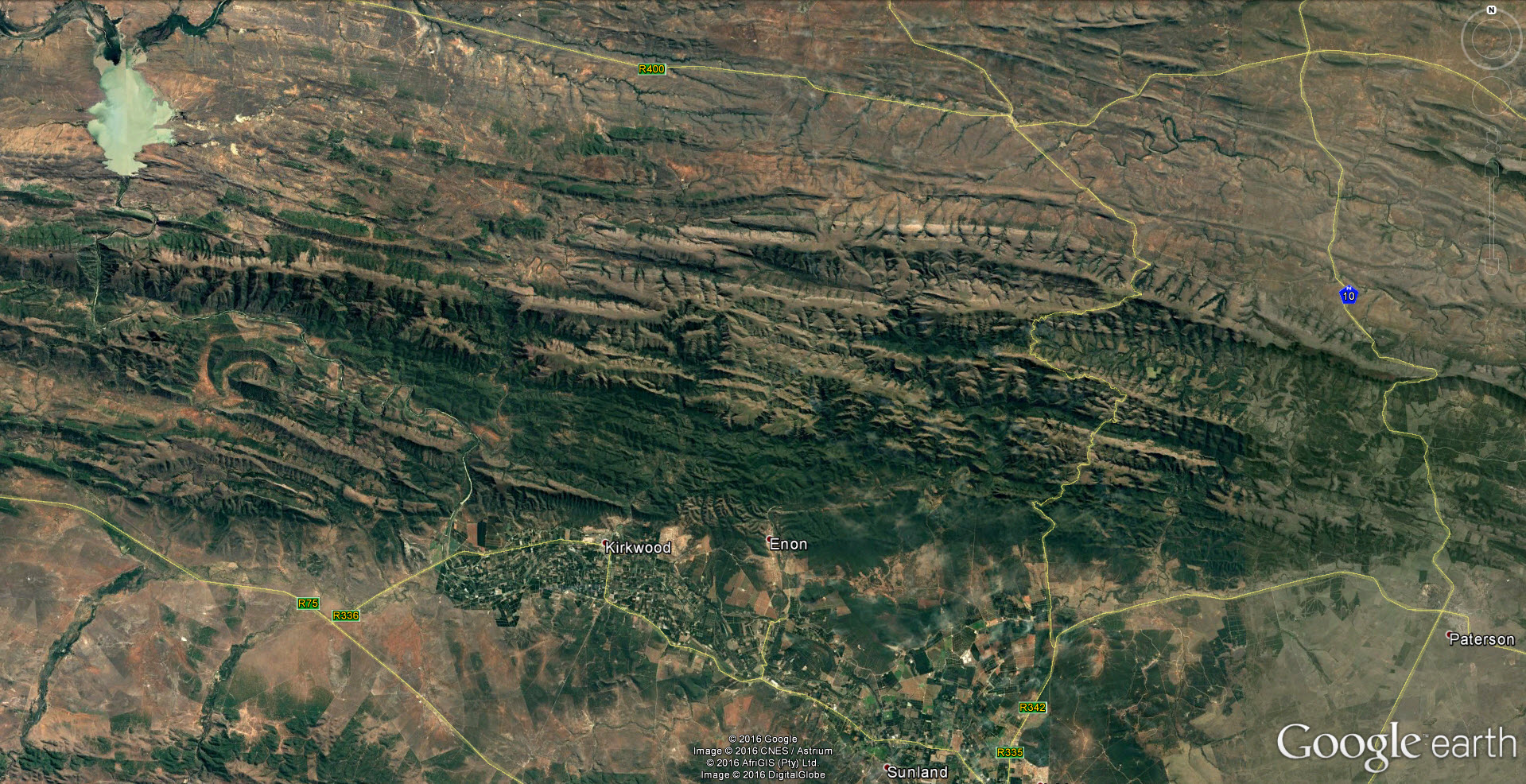55. Haworthia sordida Haw., Revis. :51(1821). Aloe sordida Roem. et Schult., Syst.Veg. 7:644(1829). Salm Dyck, Monogr. 7:f2(1863). Type: icon, f2, Salm Dyck, Monogr.: H. sordida var. agavoides (Zant. et V.Poelln.). Smith, JS.Afr.Bot. 16:2(1950). H. agavoides Zant. et V.Poelln., Feddes Repert.Spec.Nov. 43:232(1938). Type: Cape. Not preserved.
sordida: dirty looking.
Rosette stemless, seldom proliferous, to 150mm tall. Leaves to 150 X 20mm, attenuate, erect, lanceolate-deltoid, dark grey to blackish-green, surfaces scabrid with indistinct slightly raised non-confluent tubercles; margins obtuse. Inflorescence sparsely branched, lax. Flowers tepals fused, tube straight, inner lower tepals revolute.
1982 – H. sordida is probably the eastern equivalent of H. scabra. It is much more finely tuberculate and the leaves are nearly always blunt. It is very localised and scarce, although it is distributed from Uitenhage westwards to Steytlerville. The name does not do credit to this very handsome species and other species also accumulate dust on the leaf surfaces to become dirty looking. H. sordida has the same slender wiry peduncle as in H. scabra. It is a very slow growing species and although it may make offsets, the rate is extremely slow.
1999 – H. sordida is not particularly rare and occurs from near Addo all the way to Steytlerville. It has never done well in cultivation until the advent of perlite mixtures in which it really seems to thrive. Then it loses the dirty dull look and may become impressively blackish-green. A peculiarity of the leaves is the way in which the margins more or less coalesce on the upper surface of the leaf before the tip. The outer part may recurve slightly to form a small end-area which is retused in some of the western forms. J.D. Venter suggests that this character may be a clue to the origins of H. bruynsii, which is geographically complementary. The species has several notable variants and the leaf arrangement may vary similarly to that in H. scabra, although the leaves do not become as falcate and rotate as they can in that species. I did collect a form with exceptionally long, slender leaves from near Kirkwood in 1988 which I intended naming for Col. Scott. Unfortunately the specific site has been destroyed by bush-clearing and I have not been able to relocate it. A less slender-leaved form is present nearby which would probably conform with the var. agavoides.

a. var. sordida
This is the ordinary well-known form with erect , slightly spreading leaves which occurs around Addo, Kirkwood and on westwards to Kleinpoort
Distribution: 3324 (Steytlerville): Kleinpoort (-BD), Smith 2923, 7042, 7044 (NBG); W. Steytlerville (‑DB), Smith 7043 (NBG). 3325 (Port Elizabeth): Brakfontein (-AC), Bayer (NBG); Glenconnor (-AC), Cook (BOL); NW. Uitenhage (-AC), Smith 5091 (NBG); Enon (-BC), Thode A1133 (PRE); Welgevonden (-CA), Smith 3584 (NBG); Addo (-DA), Fourcade 101 (NBG), Smith 3548 (NBG); Addo Road (-DC), Long 1131 (PRE), Long 1961 (BOL), Arnold (BOL), Cook in NBG 965/30 (BOL), Britten (BOL).

Haworthia sordida var. sordida JDV96/91 Soutkloof. It occurs here in a wide array of micro-habitats. 
Haworthia sordida var. sordida JDV91/10 southeast of Kirkwood. A narrow leaved form probably equating to the var. agavoides of Zantner. An even more attenuated form seems to have been eradicated in this area by agricultural clearing. 
Haworthia sordida var. sordida JDV93/20 east of Springbokvlakte. The species occus further to the west and the plants may be much smaller. 
Haworthia sordida var. sordida JDV91/120 kleinpoort. Here the plants are typical but south of here was a population which included hybrids with H. venosa ssp. woolleyi.
b. var. lavranii Scott, Cact.Succ.J(U.S.) 53:70(1981). Scott :8(1985). Type: 3324 (Steytlerville): Perdehoek (-AC), Hechter in PRE 61124.
lavranii: for J. Lavranos.
This is characteristic of smaller western forms with recurved leaves, although the end-area as discussed above is hardly apparent in Scott’s illustration (1985).
Distribution: 3324 (Steytlerville): Perdehoek (-AC), Hechter in PRE 61124; NE. Die Bordjie, Baroe (-BC), Bayer & Bruyns 6588 (NBG).

Haworthia sordida var. lavranii JDV91/124 Langveld. Growing near to H. bruynsii. 
Haworthia sordida var. lavranii JDV94/49 southeast of Springbokvlakte. The smaller variety with almost retused leaves. 
Haworthia sordida var. lavranii JDV94/99 Springbovlakte. Another population in which the leaves have a pronounced end area.

